UC Davis Professor Ting Guo fired after being accused of sexually assaulting a high school student
An external investigation into the university’s handling of the matter is also underway
BY KAYA DO-KHANH campus@theaggie.org
On Thursday, Jan. 19, UC Davis
Professor Ting Guo was dismissed from the faculty of UC Davis after being accused of sexually assaulting a high school student in 2010. The decision was made by the Board of Regents at the request of UC Davis Chancellor Gary S. May and at the recommendation of UC President Michael Drake, according to a statement by UC Davis.
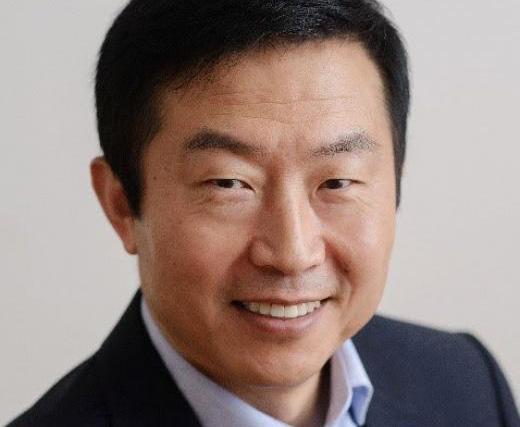
“We are grateful that the regents agreed with our recommendation to terminate the employment of Dr. Guo effectively immediately,” May said in the statement. “Sexual misconduct is not tolerated at UC Davis. We encourage people to report abuse and seek support.”
The chemistry professor, who was employed by the university for more than two decades, was placed on academic leave in early 2021 after an investigation by the UC Davis Title IX found that he had sexually assaulted a high school student who had worked in his laboratory. The investigation began after a 2018 civil lawsuit against Guo alleged that in 2010, the professor sexually assaulted the student multiple times at his home, according to a recent press release. Court documents state that
Guo’s accuser grew up in the Davis area and met Guo when she was 18 years old while completing an AP chemistry assignment that involved shadowing a working chemist. She began shadowing him in January 2010, according to an article from the San Francisco Chronicle.
Guo was a mentor in the Young Scholars Program, a summer program in which high school students complete a research project in a campus lab and work one-onone with research faculty, until 2019. The university said in another statement that the woman involved was never enrolled as a student at UC Davis and was not a part of the Young Scholars Program.
“Due to issues related to student and employee privacy laws, we are unable to address or confirm specific details of the process,” the statement from the university reads. “We can confirm that the internal processes remain ongoing, and appropriate UC policies and procedures are being followed to address this serious matter.”


The university said that by request of Chancellor May, an external investigation into UC Davis programs involving youth will be conducted.
Lecturers file Unfair Labor Practice charge after UC changes grade deadline to Feb. 13
The union is demanding compensation for what they view as additional labor required of lecturers due to fall UAW strike
BY LEV FARRIS GOLDENBERG campus@theaggie.org
Student dies in Segundo residence hall
UC Davis released a statement regarding the death that occurred on Tuesday
BY RACHEL GAUER campus@theaggie.org
On the morning of Jan. 24, firstyear computer science major Arhan Vyas died in Miller Hall, according to a recent press release. The cause of death has not been released as of Jan. 24. First responders were present at the scene, according to the statement, and “did all they could for the student.”
The UC Davis Fire Department responded to the student’s address once at 1:46 a.m., and then again at 5:05 a.m., according to an article by the Davis Enterprise, although it has not been disclosed why there were multiple
responses.
“Our hearts go out to the family, friends and others who knew and loved him,” the press release reads.
UC Davis shared several mental health resources for grieving students and faculty to contact, including Student Health and Counseling Services (SHCS) for students and the Academic and Staff Assistance Program (ASAP) for faculty. Miller Hall is a freshman residence hall located in the Segundo residence hall area that houses over 200 students. This is a developing story, see online for updates.
The UC-AFT lecturer’s union filed an Unfair Labor Practice (ULP) charge against UC Davis on Dec. 30 in response to the university’s extension of fall quarter’s grade submission deadline.
“UC-AFT supported our UAW siblings in their strike and we are holding the UC accountable for any ramifications their inability to negotiate a fair contract with UAW had on our members,” Katie Arosteguy, communications coordinator for the Davis chapter of UC-AFT and a lecturer in the UWP department, said.
The ULP charge alleges that the UC violated the Higher Education Employee Relations Act (HEERA) when they extended the grading periods at multiple campuses, an action that the union says “required lecturers to work through their scheduled holidays.”
With academic workers on strike for higher wages and better labor practices during fall quarter finals, a backlog of ungraded student work built up. As a result, the university initially pushed the grade deadline to Dec. 28 before later extending the date to Feb. 13, according to an email to UC Davis staff and faculty sent by Provost and Executive Vice Chancellor Mary Croughan.
According to Croughan’s email, a majority of instructors of record were able to submit grades by the initial deadline of Dec. 28. However, not all lecturers were able to submit grades, and instead submitted a ‘No Grade’ (NG) for their students.
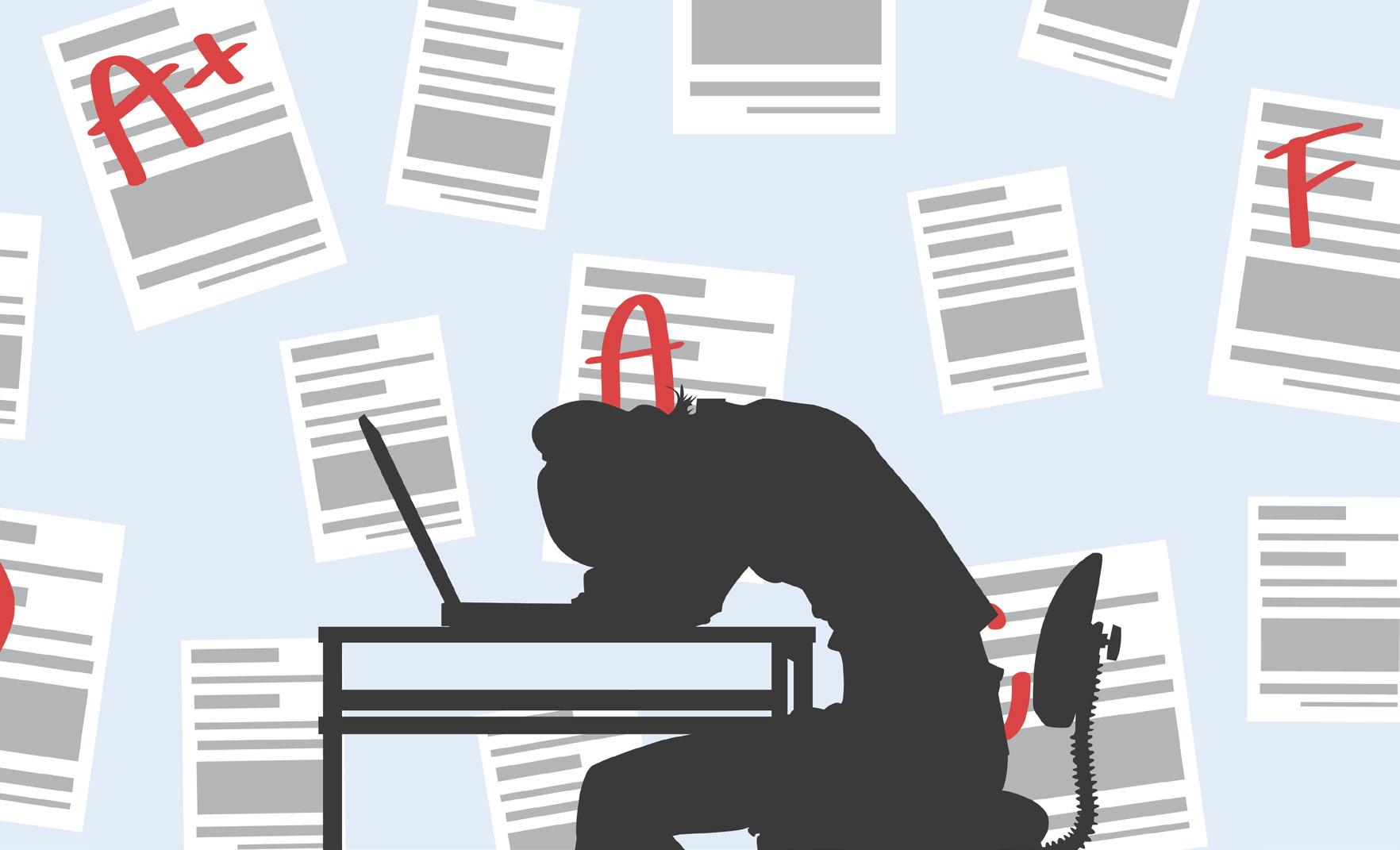
Courtney Caviness, a professor in the Sociology department, told students
in an email that she would likely be unable to submit fall quarter grades by the Feb. 13 date. “I have 250 students across two classes, and it would be impossible [...] for me to grade the backlog for both my courses while also fulfilling my teaching contract for Winter quarter,” Caviness wrote in the email.
The lecturer union’s charge also alleges that lecturers were coerced into doing “struck work,” which, according to Arosteguy, lecturers have a right under HEERA to refuse. Struck work is “a product which is produced by an employer during the period of a labor dispute with his employees,” according to the International Brotherhood of Teamsters.
In response, UC-AFT filed a Demand to Bargain and is currently engaged in effects bargaining with the university.
Arosteguy, who has been a lecturer at UC Davis for 13 years, is part of the team of UC-AFT bargainers. According to Arosteguy, the team is asking for two things: that the UC give lecturers the ability to remove fall 2022 student evaluations from their review files, and compensation for what they view as additional labor due to the strike.
According to UC-AFT, “the disruptions caused by the strike caused some undergrads to evaluate lecturers more harshly than they would have under ordinary circumstances.”
‘Remembering


Planned Parenthood hosts
Roe’ Rally in downtown Davis
The 50-year anniversary of historic Supreme Court decision reflected reality of post-Roe America
BY MADELEINE YOUNG city@theaggie.org
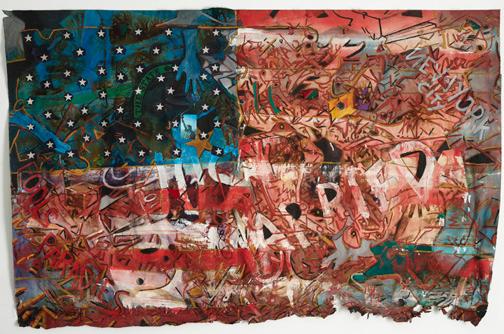
On Jan. 21, the weekend of what would be the 50-year anniversary of the landmark Supreme Court case Roe v. Wade, Planned Parenthood Mar Monte hosted a “Remembering Roe” rally at the Davis Community Church downtown. The rally was used as a decompression space for attendees, with speakers discussing the new realities of the reproductive rights movement in a post-Roe America.
“We’re really excited to be partnering with Planned Parenthood Mar Monte because, as everyone is aware, the issues that have occurred recently that are attacking our most vulnerable populations are very relevant to our groups,” Davis District
4 Councilmember Gloria Partida said at the rally. “When you begin to take away rights from those folks, it affects everyone, so we are very concerned about the direction that our nation is going in.”
Maiya De La Rosa, an organizer with Planned Parenthood Mar Monte, talked about what Planned Parenthood is doing to ensure they can continue to provide abortion access.
“We’re contacting additional abortion providers because of an influx of people who are coming out of state and that’s going to continue going forward,” De La Rosa said. “We’re

continuing to train providers as well as developing new health centers. Right now we are one of the first affiliates to do behavioral health and provide federal centers as well as primary care. We’re expanding our primary care services throughout the Central Valley and Sacramento.”
De La Rosa was accompanied by California State Assemblymember Cecilia Aguiar-Curry, who represents District 4, which includes Davis. She also spoke about the state of reproductive rights in post-Roe America.
“We’re here to fight for our rights because our rights have been taken away by the Supreme Court,” AguiarCurry said. “Last year’s draft opinion overturning Roe was leaked and it was a gut punch to every single one of us. I kept saying to myself ‘It can’t be happening, it can’t be happening,’ and I’ve been fighting for this. [...] When the final decision dropped, we weren’t surprised, but that morning, we woke up to a new America.”
Many UC Davis students attended the event, including first-year Sia Patel, who is a political science public service major.
“I thought it was really inspiring and honestly kind of emotional,” Patel said about the event. “It’s sad to think about how much has changed since Roe was overturned and how we’re almost receding.”
SERVING THE UC DAVIS CAMPUS AND COMMUNITY SINCE 1915 THEAGGIE.ORG VOLUME 146, ISSUE 13 | THURSDAY, JANUARY 26, 2023
JOANNE SUN / AGGIE
REMEMBERROE on 8 READ MORE UC Davis Professor Emeritus Mike Henderson to hold
SEE PAGE 7
Henderson: Before the Fire, 1965-1985” will display neverbefore-seen work by the artist. FOLLOW US ON SOCIAL MEDIA @THECALIFORNIAAGGIE @CALIFORNIAAGGIE @CALIFORNIAAGGIE THE CALIFORNIA AGGIE
TO THE AGGIE
first solo exhibition in 20 years
“Mike
DONATE
on 8
GRADEDEADLINE
Former UC Davis chemistry Professor Ting Guo. (UC Davis / Courtesy)
Grand reopening of Aggie Reuse marks store’s major transformation
On-campus thrift store Aggie Reuse transitions to a zero-cost resource for students
BY LILY FREEMAN campus@theaggie.org
Jan. 17 marked the grand reopening of the Aggie Reuse Store, an ASUCD student-run unit known as the “oncampus thrift store,” according to their website. Their mission is to promote sustainable fashion and creative upcycling while providing basic resources for the community.
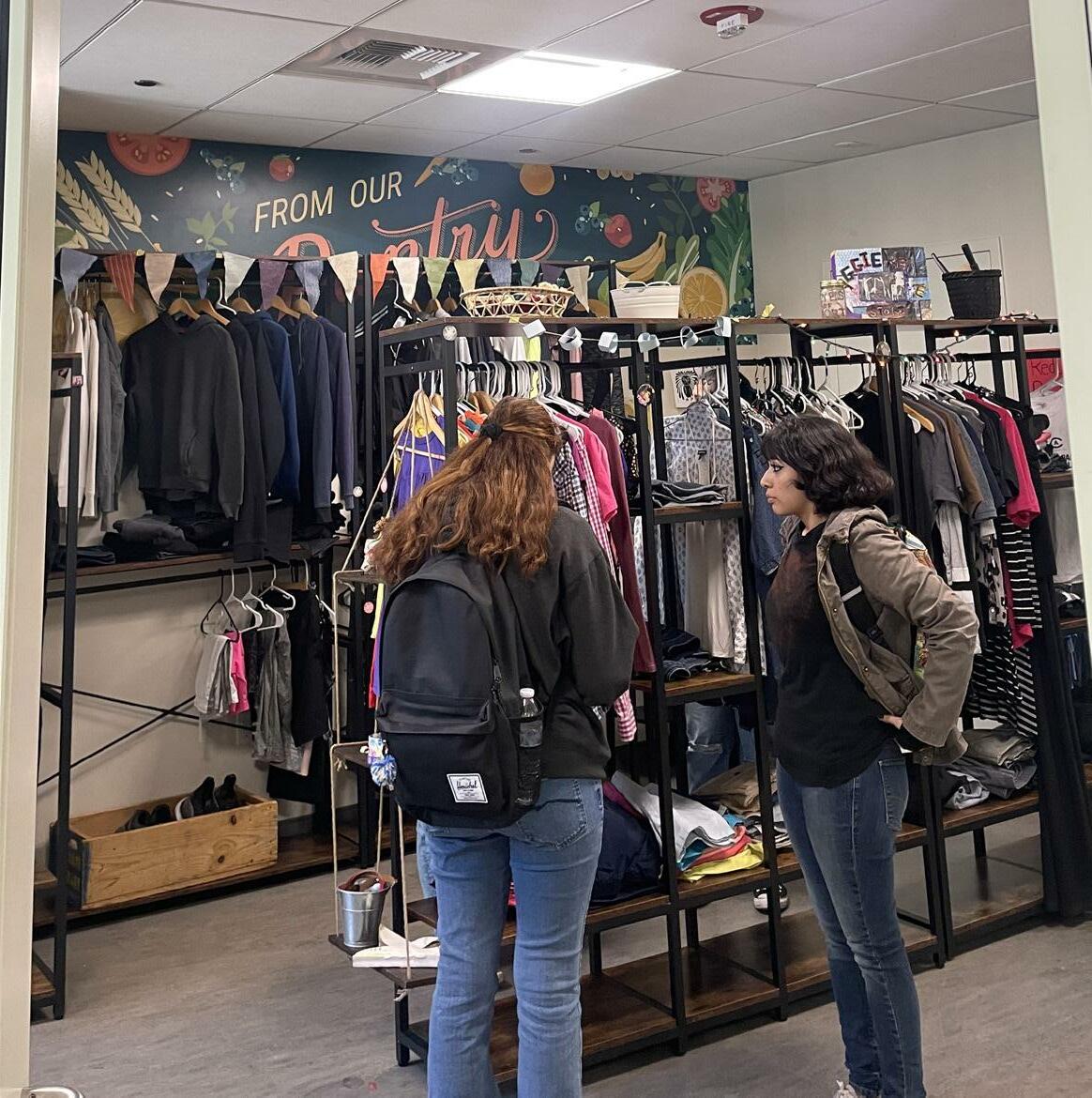
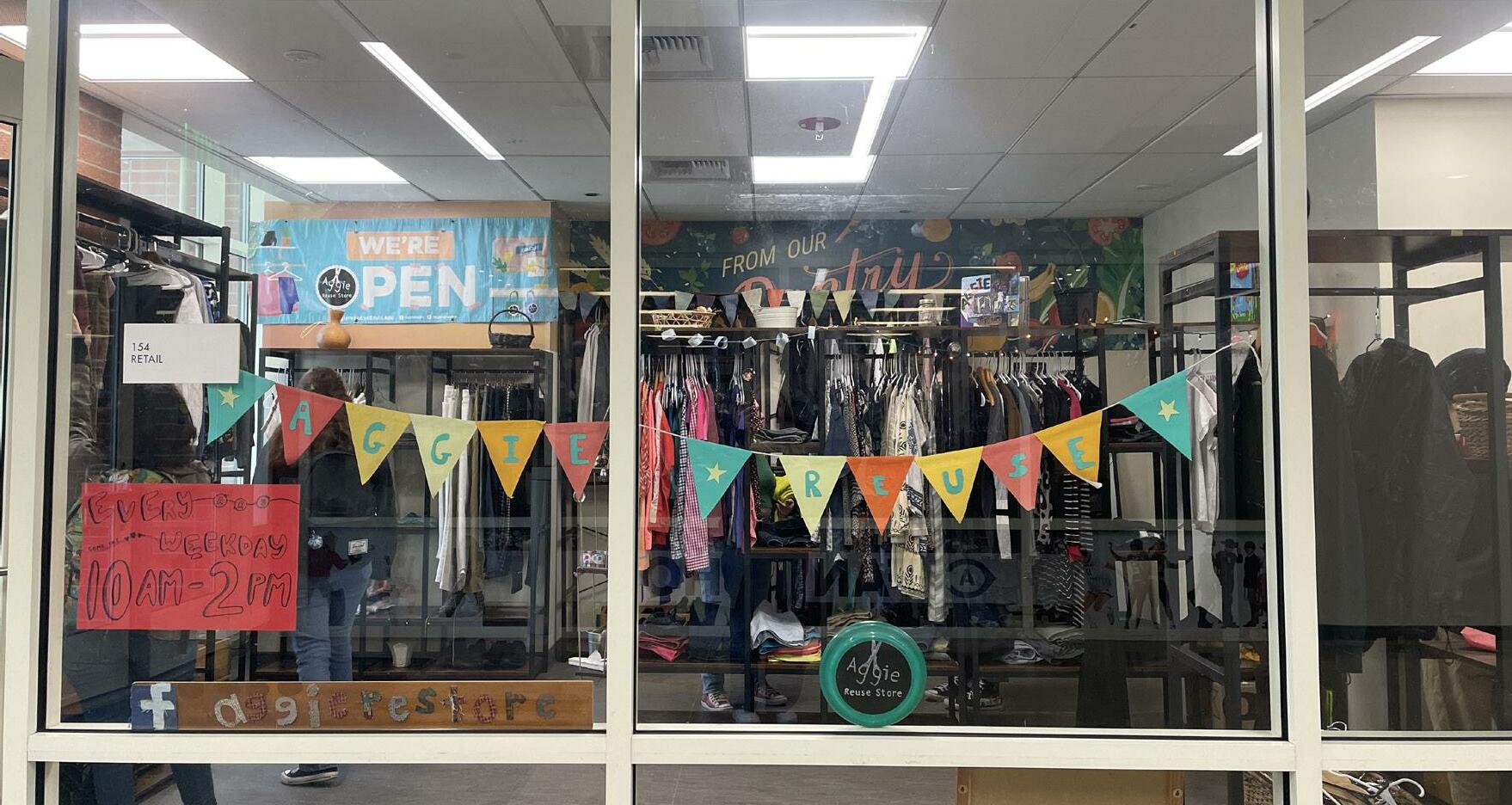
Aggie Reuse holds a variety of items donated by the community, such as second-hand clothing, school and craft supplies, bike helmets, shoes, fabrics and more, according to their website.
Paloma Casillas, a fourth-year English and Chicano studies double major and member of the Aggie Reuse team, detailed the store’s transformation before its reopening.
“We have moved from a thriftstore model to a mutual-aid model,” Casillas said. “This means that where we used to sell our goods for about a
Casillas also noted that the store has moved from the Silo to Memorial Union (MU) room 154, a larger space that can accommodate more donations and make the store easier for students to access. The store is located near the Pantry and directly next to the Information Desk and the MU.
Max Isensee, a fourth-year political science major, described his experience as a customer on the day of the reopening.
“Aggie Reuse is clearly a great opportunity to give help to those in our community that need it the most, especially now that everything is completely free,” Isensee said. “As a
college student trying to save money, it is really great to see the selection of styles and sizes for everyone’s needs.”
Antonio Delgado, a second-year communication major and customer at the reopening, expressed similar thoughts.
“I was really impressed to see all of the clothing they had to offer,” Delgado said. “I was shocked to learn that all of that was free and saw a big transformation from the store that they were in the past. I really think that there could not be a better place for students to thrift affordably.”
Curtis Pan, a fourth-year economics and statistics double major and current sales team lead at Aggie Reuse, outlined the various ways students can get involved with the organization.
“It’s really easy,” Pan said. “You can sign up for our email list through our
website or [the link in our] Instagram bio to hear about upcoming events and opportunities. Also, feel free to stop by, and anyone working will get you in contact with the team that you want to join on Aggie Reuse.”
The Aggie Reuse organization is composed of sales, design, marketing, social media and data analytics teams, according to their website, providing a diverse variety of ways for students to get directly involved with the cause.
Pan also explained that any member of the Davis community can now bring donations directly to the store on Fridays during store hours.
Casillas said that students should take advantage of all of the benefits that Aggie Reuse has to offer.
“Everything is free,” Casillas said. “We know that with the reopening, Aggie Reuse has become a much more accessible, affordable and sustainable resource for everybody and anybody. We are here for you, and it’s a completely free resource on campus, so why not take it?”
Aggie Reuse is open Monday through Friday from 10 a.m. to 2 p.m. in MU 154.
Experts, students shed light on tech user privacy concerns and online safety measures
Learn more about invasive technologies, how they manifest
informed decisions about your data
BY REBEKA ZELJKO features@theaggie.org
Researchers say that many are unaware of the ways technology companies utilize our personal data. According to LegalJobs, “67% of internet users in the U.S. are not aware of their country’s privacy and data protection rules.” But just because users don’t know how their data is being used, that doesn’t mean they aren’t concerned.
Another study conducted by the Pew Research Center reported that as many as 79% of Americans on the web worry about companies infringing upon their online privacy. This is because people are noticing the ways their data is used to shape the media they receive.
It is common for people to come across a well-targeted advertisement while using their tech devices. Daniella Mejia, a fifth-year political science major, says she frequently encounters media personalized to her interests.
“It happens all the time,” Mejia said. “In my Portuguese class, my phone can hear me talking about it because I started getting Portugal travel suggestions on my Pinterest, and it’s pretty cute, but it’s also like it’s always intuitively listening.”
Jones,
associate director for academic technology services at UC Davis, says that audio collection can occur in technologies with voice-activating features, but tech companies lack transparency about how the data is utilized.
“The newer technologies are problematic, but sometimes for different reasons,” Jones said. “Alexa, for instance, collects snippets of audio from overheard conversations all the time. Amazon tells us that that information is regularly deleted, but that is not a transparent process, and we don’t know how that information is being used or what private conversations are being monitored.”
Audrey Ino, a third-year cognitive science major, says that she feels these examples of data collection in her dayto-day life.
“I feel like technology is invasive in the sense that it’s used as a tool to market and sell things to me,” Ino said. “I feel like it doesn’t give me free thought, and it invades my subconscious and the decisions I make.”
Some view technology as a trade-off. According to Jones, there is the reward of convenience and information in exchange for information.
“A lot of people don’t think or worry much about entities such as corporations or the government knowing about their location or their activities,” Jones said. “Most people see themselves as law-abiding citizens, and therefore they aren’t concerned with how they use their technologies or how their locations are being tracked. I think a larger group of people […] are aware their information is being tracked, but they see the trade-off and that these conveniences outweigh.”
Ino says some might not be aware of the way their information is utilized.
“I think the biggest threat is the fact that many people are uneducated about technology, and companies use that aspect of vulnerability to take advantage,” Ino said. “I also feel that the power of technology and social media doesn’t allow people to have freedom of thought.”
To some, data collection feels inevitable. Mejia says that tech companies give us the illusion of privacy.
“I can request to keep my information private, but it’s frustrating because it’s smart and it can adapt,” Mejia said. “It feels like I have no autonomy. Sometimes, it gives you the option to opt out of ‘cookies,’ but a lot
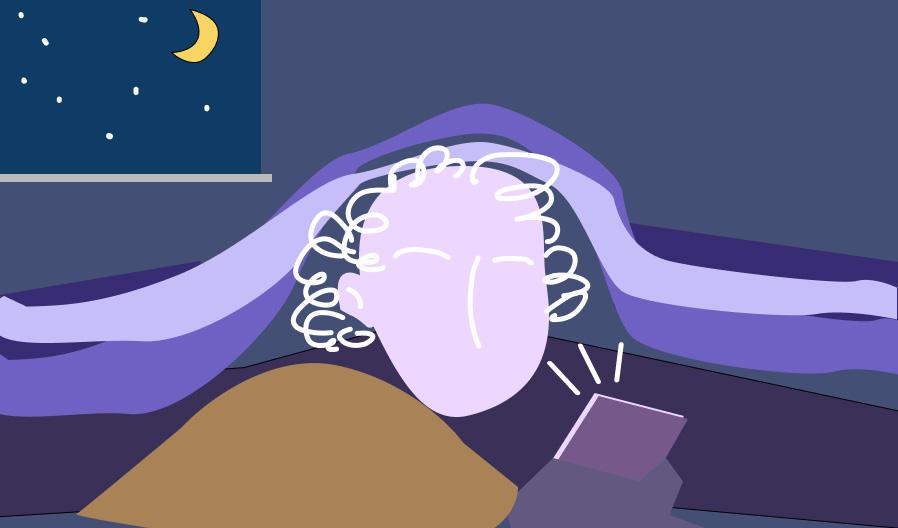
of times, it won’t actually let you move forward on the site without clicking ‘accept.’ So you basically have to give them access anyway.”
Other similar features that claim to ensure privacy can have flaws.
“One can do a web search in incognito mode, and then different websites would not know necessarily where the queries are coming from,” Jones said. “However, an employer can track its employees’ activities in incognito mode, just the same as a UC Davis student visiting a website from the dorm can have that information being tracked, even in incognito mode.”
Several solutions have been suggested to avoid data collection and ease anxiety about internet privacy. But Mejia says most solutions aren’t realistic.
“You can go completely offline, but then you just end up isolating yourself in another way,” Mejia said. “There’s also VPNs, but the thing about VPNs is that they usually cost money. It’s just an obvious equity gap with money and also with information. Not everyone can afford a VPN or knows what a VPN is in the first place.”
Jones suggested a rule of thumb to identify areas of concern. “If you’re not paying for the
product, you are the product,” Jones said.
Others turn to the government to regulate tech companies and mitigate data collection.
“I think there needs to be more transparency and regulation,” Ino said. “Individuals who use technology have the right to fully understand what happens to their information when they submit it. There should be some legal initiatives that ensure companies only use personal data for what users consent to.”
Ino says that solutions feel out of reach, and the presence of invasive technology will inevitably continue.
“It seems like tech giants are just so much smarter than the officials in our government so they can use these loopholes and access the information that they want,” Ino said.
Jones said that he predicts that we will become increasingly indifferent to how our data is used in the future.
“I think we will continue on the trajectory we are on,” Jones said. “And that trajectory it’s moving on now is with the increased concern with convenience and decreased concern with transparency.”
2 | THURSDAY, JANUARY 26, 2023 THE CALIFORNIA AGGIE
Andy
Ph.D., a continuing lecturer in UC Davis’s University Writing Program and an academic
in
day-to-day and
your
how to make
from 10-2.
Students shop during the grand reopening of Aggie Reuse. (Lily Freeman / Aggie)
Aggie Reuse, “the on-campus thrift store,” is now open Mon.-Fri.
(Lily Freeman / Aggie)
dollar or two,
is
free.
pretty
to
everything
now
It’s
amazing
see it actually happen, but it would not be possible without donations from the school and the student body.”
CHRISTINA LIU / AGGIE
City of Davis to award $1.2 million to nonprofits in the 2023-2024 fiscal year
HOME, CDBG funds will be used to address local housing concerns
BY MADELEINE YOUNG city@theaggie.org
According to a city press release from Dec. 16, 2022, up to $1.2 million in Federal Community Development Block Grants (CDBG) and Housing Investment Partnership (HOME) programs will be awarded to support affordable housing and social services to low- and moderate-income Davis residents in the 2023-2024 fiscal year.
The city estimates $780,000 in CDBG and $460,000 in HOME funds which will be used to provide meals, shelter, transportation, healthcare, elder care, mental health and homelessness services and housing, according to the press release.
Davis Assistant City Manager Kelly Stachowicz discussed how allocating HOME and CDBG funds will impact
low-income residents and people experiencing homelessness.
“The grants are based on critical needs that the city has determined such as providing assistance to prevent or help people who are unsheltered,” Stachowicz said. “They assist vulnerable populations like the homeless and such as the elderly or individuals with disabilities.”
CDBG funds historically have gone to multiple Davis nonprofit organizations such as Yolo County Meals on Wheels — a nonprofit that is currently providing meals for about 580 elderly citizens throughout Yolo County — according to Joy Cohan, Meals on Wheels in Yolo County’s executive director.
“[Meals on Wheels] has over the past several years applied for and been awarded community development block grant funding through the city of Davis specific to our service for Davis seniors,” Cohan said. “Right now we are serving about 130 seniors in Davis and these grants are helping to offset our raw food costs related to the preparation of those meals.”
While CDBG funds are often used for organizations like Meals on Wheels, Yolo Hospice and Empower Yolo, 15% of these funds are allocated to making the county more compliant with the Americans with Disabilities Act (ADA), through projects like building ADA-approved sidewalks and ramps, according to Stachowicz.
UC Davis’s annual ‘Beer-for-aButterfly’ contest is back
Professor Arthur Shapiro’s contest, which contributes to climate change research, has returned again after a two-year halt due to the pandemic
BY KAYA DO-KHANH campus@theaggie.org
A UC Davis professor in the Department of Evolution and Ecology (EVE), Arthur Shapiro, has hosted an annual Beer-for-a-Butterfly Contest, which contributes to climate change research, since 1972. After a two-year hiatus due to the pandemic, the contest has resumed this year.
Shapiro started the contest as a part of his long-term studies of butterfly life cycles and climate change. He has been collecting data on butterfly population trends across 10 sites in California for approximately two-week intervals since 1972, according to his research website.
The contest is open to the public, and the participant who finds and collects the first Cabbage White butterfly of the year in central California is awarded a pitcher of beer (or its equivalent) as a prize. The contest rules state that the butterfly must be brought in alive to the Department of Evolution and Ecology office at 2320 Storer Hall with complete data about the date, time and location of its collection. The butterfly also has to be an adult with no caterpillars or pupae and be found outdoors.
Shapiro said that since 1972, the first flight of the Cabbage White butterfly has occurred between Jan. 1 to Feb. 22, with Jan. 20 being the average first flight date, according to the UC Agriculture and Natural Resources website.

However, due to the recent heavy storms in Northern California during the first two weeks of January, Shapiro said that he expects the butterflies to
come out later this year. He noted that the recent weather patterns, which are not suitable for butterflies to fly in, are “unusual but not unique,” and based on his studies of climatological data, the butterflies have come out later than usual in similar weather patterns over the years. Meteorology is a hobby of his, and he does weather forecasting. He has been predicting that the current weather pattern would end on Jan. 19 and that butterflies would start to come out with a “sustained period of warm, dry weather.”
A Los Angeles Times article from 2019 described Shapiro’s difficulty articulating why butterflies fascinated him as a boy. Despite his trouble articulating the root of his interest in butterflies, he shared that what began as a niche interest within his studies has developed over the years.
“When I started this [study], there was no perception of global warming […] and as time has gone by, it has become clear that there is a phenomenon of directional climate change,” Shapiro said. “This project is a small part of my research program, but it has acquired new significance in the context of global climate change because it has become an indicator of the biological consequences of climate change.”
He said that he sometimes goes out for hours searching for butterflies after teaching class in the morning. He has a lot of different places where he looks, as he has learned where the butterflies will most likely come out over the years.
“I joke that I understand butterflies much better than I understand my wife, and we got married in 1969,” Shapiro said with a laugh.
After several decades of holding the contest, Shapiro has won all but four times, losing solely to UC Davis graduate students. One recent winner is Jacob Montgomery, a 2017 master’s graduate in ecology who is currently the project manager for California Trout in the Central Valley Region.
Montgomery found the Cabbage White butterfly on his way to the farmers market in 2016, even though he was not searching for it. He knew about the contest and decided to save it and turn it in to see what would happen.
“I didn’t know that I had won the contest when I found the butterfly,” Montgomery said. “I didn’t realize the full magnitude of the impact of me finding it at the moment.”
Montgomery was able to collect his prize and share a pitcher of beer with Shapiro while talking butterflies at The Davis Graduate, a bar and grill that used to be located in the University Mall shopping center, but is no longer open.
“That was by far one of the coolest things I’ve ever done,” Montgomery said.
Shapiro does not have any graduate students anymore, adding that he is 77 years old and is almost ready to retire. After asking him if he would continue the contest after he retires, he replied, “Sure, why not, it’s fun. I like drinking beer.”
“It creates something of a support mechanism for the whole totality of what our service entails,” Cohan said. “It’s the meals, the packaging, the logistics around recruiting volunteers and getting the meals into the hands of the seniors.” The HOME grants awarded have been used in multiple projects in order to help assist in providing affordable housing throughout the county such as in Willowbank Park, Verona, Mahogany Lane and other areas.
“HOME funds are for affordable housing in the county,” Stachowicz said. “We generally try to use those for a project or purpose that is usually constructing new, affordable units and it’s usually used as gap funding for a
project that is piecing together all the different funding sources from usually a lot of different places for affordable housing.”
After awarding funds to Mutual Housing California with the help of HOME grants, the Adelante Development project, a 38-unit mutual housing community on Fifth Street in Davis, was completed during Jan. 2022. In the coming years, more developments are expected in order to help address affordable housing and homelessness according to the city of Davis website. According to Stachowicz, the CDBG and HOME funds will be allocated accordingly in order to benefit the populations that need it most.
Davis secures state funds for agricultural conservation easements

The Yolo Land Trust and Solano Land Trust easements will protect agricultural land acquisition for years to come
BY LA RISSA VASQUEZ city@theaggie.org
On Dec. 15, 2022, the city of Davis, Yolo Land Trust and Solano Land Trust received nearly $4 million in grant funds from the Sustainable Agricultural Lands Conservation (SALC) program, a division of the California Strategic Growth Council’s Affordable Housing and Sustainable Communities Program. The grants will fund the city of Davis’s purchase of two agricultural conservation easements.
Shanna Atherton-Bauer, a senior environmental planner with the California Department of Conservation and the program manager for land conservation programs, explained the purpose of easements.
“The theory is that you can’t just construct housing; you also need to protect the agricultural land surrounding communities,” AthertonBauer said. “Regional parks and open space districts work with landowners who are interested in conserving their lands. They help develop applications and then they bring those applications to us, so we don’t work directly with landowners. We work with intermediaries who will ultimately hold the easements and ensure that the land is not developed.”
Reynolds talked about concerns regarding negotiating zoning and developer contracts, but that easements can preserve critical resources “in perpetuity.”
“What the conservation easement does is it says you have to keep this in agriculture forever,” Reynolds said. “Even if this is annexed into the city someday, it would still stay agriculture; [it] can’t be rezoned for something else, and so there’s a value on it. Yolo County has some of the best farmland in the world, and so there’s also a desire to preserve that farmland because we also need food.”
According to Tracie Reynolds, the city manager of the Davis Open Space Program, the city is working to execute the easements by Feb. 2023, and both are expected to be completed by the end of 2023 or early 2024. The grants are described in a document that Reynolds provided.
The first grant awards $915,000 to help the city purchase an agricultural conservation easement on 120 acres of farmland located near the intersection of County Roads 104A and 30, according
to the document. The second grant, for $2.9 million, will help purchase an easement on 217 acres on the city of Davis’s southern border with Solano County.
Reynolds talked about Measure O and how the parcel tax plays an important role in securing funds for land easements.
“Measure O is a parcel tax; it’s small like for your typical house,” Reynolds said. “I think it’s $24 a year. It’s a small amount of money, but it generates about $700,000 a year. It’s not always easy to come up with $500,000 or something for matching funds. The point is that in 2000, because of Measure O, it became easier to preserve more farmland because we had this ready source of funds.” Reynolds’ work will continue to focus on promoting Measure O as a cost-effective and efficient way for the city to secure acquisition grants.

The Open Space Program and Open Space Commission consult with property owners and land trusts to establish guidelines for priority land acquisitions so that preservation occurs without halting urban growth and property development.
According to a comment provided by John Currey, the executive director of the Yolo Land Trust (YLT), the organization has been a longtime Open Space Program partner, and they have plans to continue to work with Open Space this year.
“We’ve partnered with the City of Davis on agricultural conservation easements since 1995,” the statement reads. “Both staff and the City Council of Davis have been strong partners with YLT, and the city has provided much-needed funding to accomplish our mission of conserving farmland in and around Davis. To date we have completed 21 conservation easements with Davis, and we have a potential easement forthcoming in 2023.”
THE CALIFORNIA AGGIE THURSDAY, JANUARY 26, 2023 | 3
MIRANDA LEE / AGGIE
MIRANDA LEE / AGGIE
The Cabbage White Butterfly. (Kathy Keatley Garvey / Courtesy)
OPINION
The spread of AI is inevitable
We must create boundaries on generative art to mitigate its impact on creators
BY MAYA KORNYEYEVA mkornyeyeva@ucdavis.edu
In June 2022, Cosmopolitan published the first ever AI-generated magazine cover, designed in a collaboration between OpenAI and artist Karen X. Cheng. And it took just 20 seconds to make.
OpenAI and programs like MidJourney, Stable Diffusion, DALL·E and ChatGPT are all part of a class of technology known as “generative AI.” This artificial intelligence (AI) is characterized by a learning process called diffusion, where massive datasets are put together to train the AI so that it is able to generate new content that contains some resemblance to the training data but is conceptually unique.
While in itself, this is an extraordinary breakthrough in technology, the creation of machines that can essentially think for themselves and compose works of art, literature or film based on human-provided parameters is the stuff of science fiction. I have grown concerned over the increasing influence of artificial intelligence and what it could mean, not only for original content creators but also for the human race.
I’ll begin by outlining the socalled “AI debate.” At its core, it is an ethics-centered conflict; if AI can generate images in just seconds with virtually no guidelines on copyright and licensing infringement, how can artists ensure that their work isn’t being used, referenced or stolen?
Moreover, what will happen to human artists if artificial intelligence art sweeps the world? Approximately 5 million workers were employed in the arts and entertainment industry in the United States as of 2019, and
 MAYA KORNYEYEVA / AGGIE
MAYA KORNYEYEVA / AGGIE
these people depend on their original, handmade work for their livelihoods. With AI bots creating high-definition digital works with ease, current and prospective designers definitely have something to worry about in terms of marketing themselves to companies. The issue with current AI art through the lens of intellectual property is its heavy reliance on an unrestricted database. In my opinion, making artificially-generated art more ethical begins with establishing careful filters on which images can and cannot be used. The bare minimum would include AI developers reaching out to artists with a contract, making sure they have permission to use their images.
As for the idea that AI art will eventually make man-made art harder to distinguish and appreciate — I think this is a substantial concern. To me, art is subjective and reflective of personal ideas, values and preferences. It contains a key human element and has been used for thousands of years to showcase the human experience and illustrate emotion. Anna Ridler, an AI artist and researcher, notes this perfectly. She explained that “AI can’t handle concepts: collapsing moments in time, memory, thoughts, emotions – all of that is a real human skill, that makes a piece of art rather than something that visually looks pretty.”
An argument for lecture recordings
We should not leave behind pandemic-era teaching methods that made education more flexible
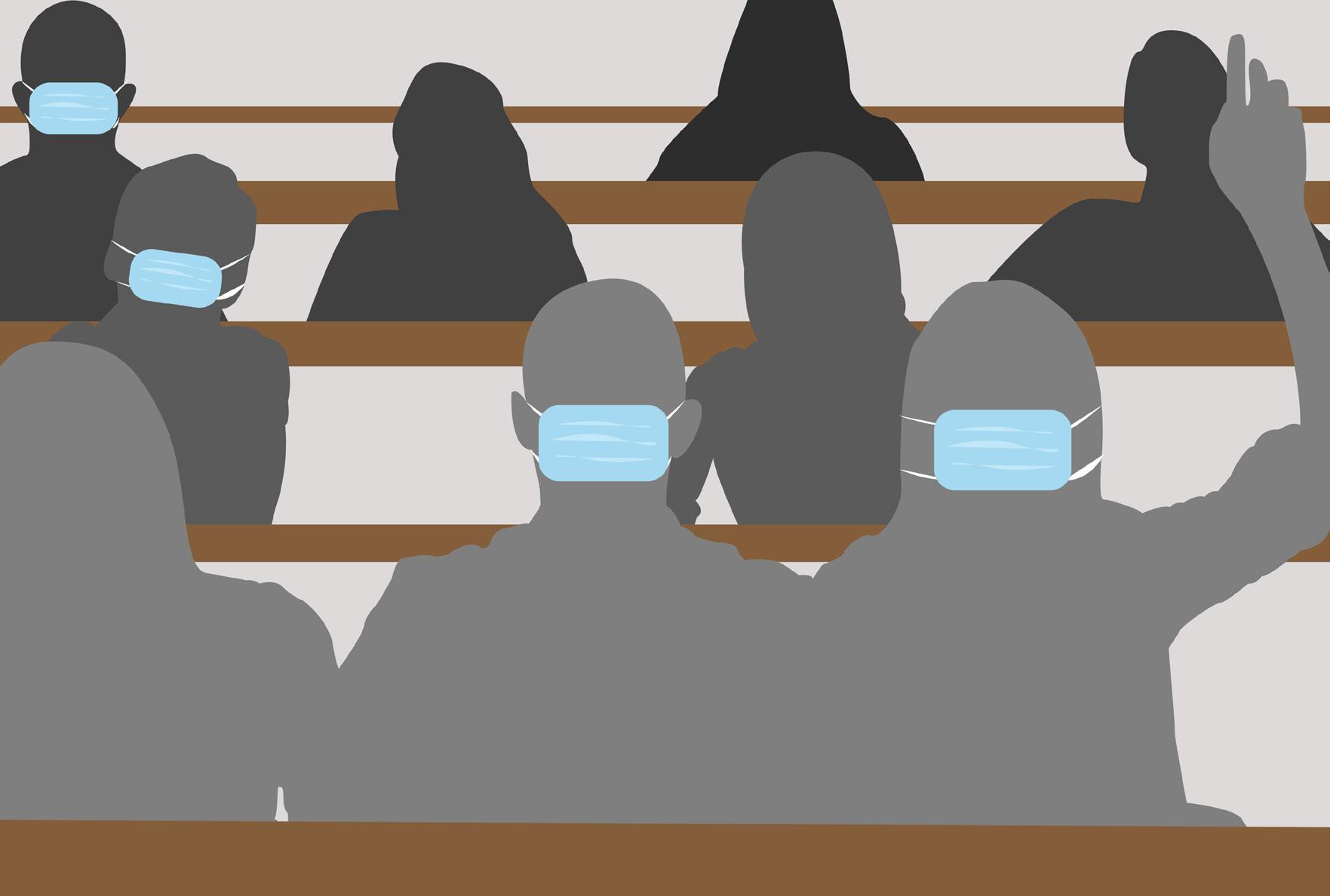 BY CLAIRE SCHAD cfschad@ucdavis.edu
BY CLAIRE SCHAD cfschad@ucdavis.edu
As the winter quarter continues to ramp up, there seems to be a steady increase in the number of sick students in my classes. The constant phlegmy coughs and stuffy noses seem to surround me in lecture halls and classrooms. I do my best to distance myself from those who seem the most audibly ill, but no matter what I do, I still overhear people discussing how terrible they feel.
And I know, I know, getting sick is pretty much inevitable as a college student, but it sucks nonetheless. But what makes it worse is having to attend classes while sick. But if I do decide to miss class and stay home and rest, I’m stressed about missing important course content. It feels like it’s only a matter of time before I face this dilemma again.
At the onset of the pandemic, everyone stayed home if they had any symptoms of illness. For the first time ever, many people were not plagued with the extreme guilt or anxiety of missing school or work when they were sick. It was almost as if people were finally seen as humans who needed to rest and put their health above all else. Despite how horrific this period was for many reasons, there was an understanding of the struggle we were all facing and the restructuring of priorities was refreshing.
Fast-forward to almost three years later, and most of these norms have been forgotten or abandoned completely.
With college students back on campus during the height of seasonal illnesses, this is painfully apparent. Each time I sit in a crowded lecture hall surrounded by people who are obviously sick, I think about how it doesn’t have to be this way. We learned that there are ways to ensure students can access lecture material or employees can continue to work from home when they are ill.
There are ways to limit the need to sit
shoulder-to-shoulder with sick people.
With each deep cough I hear, the solution seems simpler and simpler — all lectures should be recorded, eliminating the need for students to come to class sick. Despite its obvious appeal, it seems that many professors choose to no longer offer recorded lectures, leaving students to suffer the consequences of circumstances they can’t control.
That said, I do understand that this opinion to increase the frequency of lecture recording is divisive — and with reason.
Often, students become disengaged and fall into a pattern of not attending class if the lecture is available to them to watch at their leisure. I’m sure we have all had that one lecture that seems endless and focuses on a topic you couldn’t care less about. To be honest, if it’s offered in a video or audio format online it’s a no-brainer — you’re not going to go. You’ll tell yourself you will watch it later, but that might not happen, and if it does, it might not be until you need to write a paper or study for an exam.
Low class attendance is a legitimate risk, but this too can be remedied; I’ve witnessed it in some of my courses. If attendance is encouraged through graded in-class activities, which can take the form of low-stakes free writes or answers to questions based on lecture material, lecture attendance can stay pretty high while still providing recordings after class.
By making these in-class activities worth a small part of the student’s grade, it incentivizes attendance without making it impossible for students that miss a class or two to do well. Throughout the pandemic, I had many professors that gave one or two
“freebies” per quarter, meaning that if you missed a class or two, your grade would not be affected and anticipated absences were built into your grade. This allowed people to stay home when they were sick or had any other emergency, while still keeping up with the course content and doing well.
Not only do the options mentioned above take away some of the stress associated with being sick during college, but they also work to provide more resources for students to do well in their courses. If you are unsure about a specific topic or if you wanted to rewatch an example of a math problem completed in a lecture, a recording can be a great addition to your learning process. As long as lecture recordings aren’t provided as a replacement for inclass learning, they can be a great way to help students succeed.
The university already has a lot of infrastructure in place to support lecture recordings. There are over 120 classrooms across campus equipped with the lecture capture feature and directions on how to implement similar practices in the unequipped classrooms are available. We all went through the dark days of Zoom chaos in the spring of 2020, but over the last three years, we have adapted and learned new ways to make learning easier for all. We must not abandon these useful tools we gained but rather continue to improve them and use them to increase the flexibility of higher education for all.
Disclaimer: The views and opinions expressed by individual columnists belong to the columnists alone and do not necessarily indicate the views and opinions held by The California Aggie.
In this way, I don’t think generative artificial intelligence will ever be able to completely devalue human art. In a positive light, AI art may even inspire new creators. Just looking at the community database of MidJourney, I am captivated by the detail of the AI images, their conceptual creativity and the imagination of the author’s prompts. Deep dives into AI art tend to spark my own desire to pick up a pen and start sketching fantastical collages, even when I haven’t drawn digitally in a while.
The final major concern that pops up with the emergence of AI is the notion of an “author.” If an artificial intelligence program develops an image or writes a novel, would the credit for
that work belong under the name of the AI? Or would credit go to the programmers of the AI, the person who gave the explicit instructions the AI acted upon or even the millions of pieces of data that were referenced throughout the process?
At this point in the debate, the idea of machine sentience tends to be brought forth. While some argue for the idea that the artificial intelligence itself is the sole proprietor of the work — a famous example of this coming from one recently-fired Google researcher who interviewed LaMDA, Google’s upand-coming conversational technology that he believed had become sentient — others disagree on the basis that AI is merely a highly efficient computer. Whichever side you fall on, the reality is that artificial intelligence is just getting started. Perhaps programs like LaMDA are not currently aware of their thoughts and actions, but I believe that there’s little that can be done to slow the spread of AI. Put another way, if there’s a promise of profit on the horizon, it seems like ethics get pushed to the wayside in exchange for rapid development of newer and riskier technology.
“I am inevitable” seems to me the perfect calling phrase for a future generation of artificial intelligence. We need to impose policies and restrictions on the companies developing AI now, instead of scrambling to create guidelines when it’s already too late.
Disclaimer: The views and opinions expressed by individual columnists belong to the columnists alone and do not necessarily indicate the views and opinions held by The California Aggie.
BY EMILIE BROWN emrbrown@ucdavis.edu
Feb. 18 will mark the 93rd anniversary of the discovery of Pluto (the dwarf planet, not the cartoon dog). There’s no denying that the little planet holds a special place in many people’s hearts. To understand why we are so attached to a tiny rock on the outer edges of our solar system, we have to go back to the beginning.
In the early 1900s, astronomers noticed that Neptune had a slight wobble in its orbit and thought that there may be a ninth planet causing it.
After years of unsuccessful searching, Clyde Tombaugh discovered the mysterious object we call Pluto in 1930. From that day on, Pluto’s classification as a planet became a highly-debated topic within astronomy.

In 2006, Pluto was officially reclassified as a dwarf planet for two main reasons: it had not cleared all the objects in its region, and it was much smaller than other planets. As astronomers made more discoveries following 1930, it became clear that there were many more Pluto-sized objects in our solar system. The International Astronomical Union (IAU) officially recognizes five dwarf planets but estimates that there could be thousands of others waiting to be discovered. Despite this, Pluto continues to stand out.
Following Pluto’s reclassification, the public demanded that it be reinstated as our ninth planet. Famous astronomers received angry letters; people gathered at the IAU’s headquarters and started petitions. Debates about Pluto continue to this day. But why do so many people care about this dwarf planet? People have a tendency to root for
the underdog, and Pluto is absolutely an underdog. Pluto is far smaller than any of the planets, and it’s even smaller than some planets’ moons (only three-fourths the size of ours). In a row of gas giants and massive rocky planets, Pluto seems out of place, and many people say they empathize with it.
Others say they love Pluto because everyone does. We all have opinions about its planetary status; we immortalize it in pop culture, we hold festivals in its honor, we created a national holiday for it. No other object in our solar system gets that kind of attention. So many people care about this little icy rock, and that inspires many others to take an interest in astronomy. Pluto is the farthest wellknown object from our sun, and it represents all that is left to be discovered at the edge of the solar system.
While Pluto isn’t necessarily unique scientifically, the fact that so many people are so attached to it makes it a tool to get more people interested in our solar system and all the mysteries left to discover within it. Pluto is a symbol of the unexplored, the distant, the mysterious.
While you may have your own views regarding Pluto’s planetary status, there is no denying that we have an unbelievable connection to an icy rock 3.3 billion miles away.
Disclaimer: The views and opinions expressed by individual columnists belong to the columnists alone and do not necessarily indicate the views and opinions held by The California Aggie.
4 | THURSDAY, JANUARY 26, 2023 THE CALIFORNIA AGGIE
Our favorite dwarf planet and why we’re so attached
Pluto has been at the heart of years of astronomical debate
KELLIE LU / AGGIE
SUN / AGGIE
JOANNE
Federal action must be taken to prevent future mass shootings
In light of the recent shootings in California, we cannot allow ourselves to become desensitized to gun violence
Reading about mass shootings in the news has started to feel commonplace. In California alone, there have been three mass shootings over the span of a single week, with the most recent in Half Moon Bay on Monday and in Monterey Park on Saturday.
Here are some horrifying statistics — The Gun Violence Archive (GVA), a nonprofit research group, counted 647 mass shootings in 2022 and 39 mass shootings since Jan. 1, 2023 in the U.S. Additionally, gun deaths in the U.S. are more than eight times as high as gun deaths in Canada and almost 100 times higher than in the U.K.
The frequency of gun violence in this country points to a fundamental issue in our government. Those in power have failed to implement effective restrictions on firearms.
Some may be concerned that such
restrictions will infringe on their rights. But how many lives is an amendment worth? The Second Amendment was ratified in 1791 — a time long before assault weapons could take multiple lives in seconds. People will continue to die from guns, year after year, unless there are nationwide changes.
Even California, which has some of the strictest gun laws in the country, has experienced multiple mass shootings in the span of days. It has become painfully obvious, or rather, has been painfully obvious for a long time, that more gun control is needed at the federal level.
Some politicians are looking to do just that; on Monday, senators reintroduced a federal assault weapons ban as well as legislation that would raise the minimum purchase age for assault weapons to 21.
This legislation, of course, won’t
Tips and tricks to get everyone to like you in winter quarter
The difference between a gift and bribery is how good you are at winking
BY ANNABEL MARSHALL almarshall@ucdavis.edu
solve the issue of gun violence entirely, and there are many aspects to consider: the U.S. is in the midst of a mental health crisis and the roots of violence and hate run deep in this country. But in the short-term, the priority must be stopping gun deaths. After years of mass shootings, it’s been easy to become numb to stories covering gun violence. As a news outlet, we believe it’s important to remind our readers, and ourselves, that events like these are not normal. We cannot let ourselves accept them as a part of our daily lives. It is vital, now more than ever, to allow ourselves to both grieve these events and work to prevent future violence by pushing for action on a federal level.
WRITTEN BY THE EDITORIAL BOARD
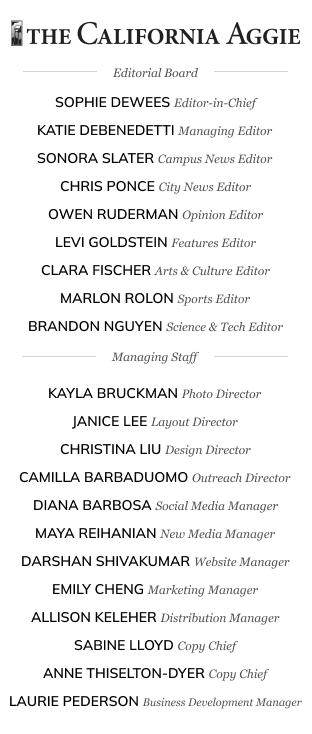
Strangers Ah! Strangers, the perfect blank slate. A canvas on which to draw a romanticized version of your personality. Here are some lies to tell strangers to make you more interesting.
1. I have a twin.
2. My middle name is Rudyard Kipling.
3. Oh my God, I love your sweater!
4. I just saw someone on campus that looks like you but, like, a lot hotter.
5. I was born with a tail. It just fell off. I keep it in a box. If you wanna come over, I can show it to you sometime. Free of charge! Just kidding, but I can definitely get you a discount.
TAs
TAs are hard to crack, those pesky little buggers. Fun fact: TA stands for Tonk Allen, the name of the first TA to ever exist! Tonk Allen was a political prisoner from Arizona who was subject to a form of punishment later deemed cruel and unusual by the Supreme Court; he was given a full-time research position and a very time-consuming thesis to write. Then, the prison guards would come into his cell eight times a day and ask him questions that were extraordinarily easy to Google. Anyway, here are some tips to get them on your side!
1. Send each email twice. The first one often gets lost.
2. Food is fuel. Bring a thermos of seasonally appropriate soup to office hours. You can even offer your TA a chance to open a thermos for you. This will make them feel important. If you’re taking chemistry, waft the thermos smells toward you. That will be a funny inside joke for you guys but also show that you know how to waft, which is important.
3. Bring up other graduate students in their department. Say things like, “Did you hear Jessica slept with Lili on the second date? I heard it wasn’t very good for either of them.”
Professors
What’s the difference between a TA and a professor? Neither of them are getting paid enough. Here’s some basic classroom etiquette.
1. First impressions are essential. Wear multiple disguises to maximize the number of first impressions. If the teacher seems to respond positively to one disguise, stick with that for the rest of the quarter. Your GPA is worth wearing a fake mustache for 10 weeks!
2. If your instructor has an accent, use the same accent to show your support.
3. Being on your computer unnecessarily during class is rude. Turn your screen around and ask their opinion on the items you put in your online shopping cart. Beige or apricot for the sweater?
Friends Look, we’re all broke here. Here are some cheap gifts for the homies whose birthdays you put into your Google Calendar and then forgot until the day of.
1. We all know the ducks at the Arb are free. But did you know that the fire extinguishers in Wellman are as well?
2. Get them a library book! Just have them return it after 12 days.
3. Arby’s gift card.
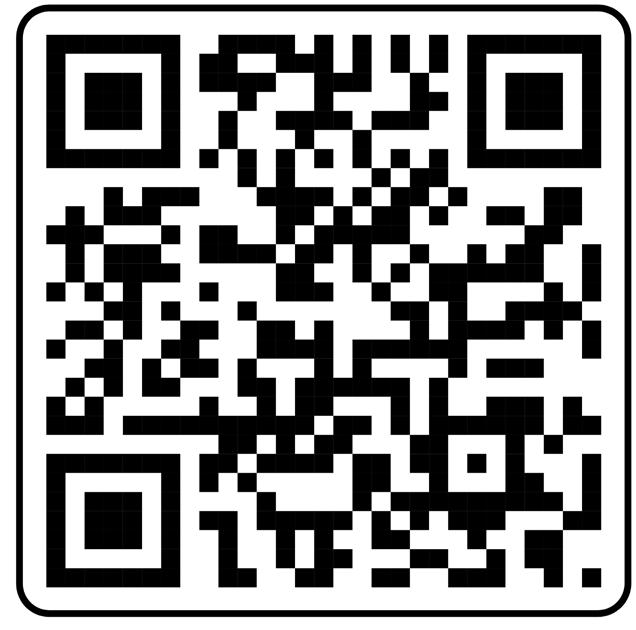
4. It’s the thought that counts. Think really hard about their birth and then tell them how you imagine it.
5. Your friends are busy. Watch a movie they’ve been looking forward to and tell them all the major plot points. This will save them hours of time.
6. Fire.
Disclaimer: This article is humor and/or satire, and its content is purely fictional. The story and the names of “sources” are fictionalized.
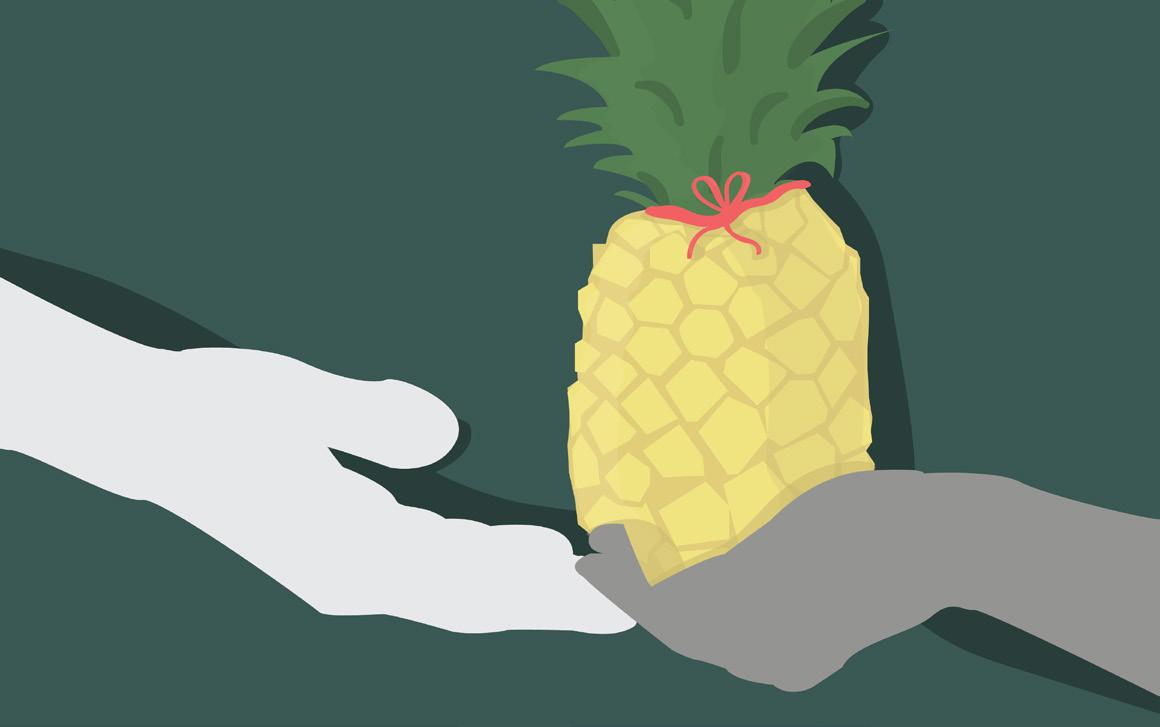
HUMOR
Weather-proof
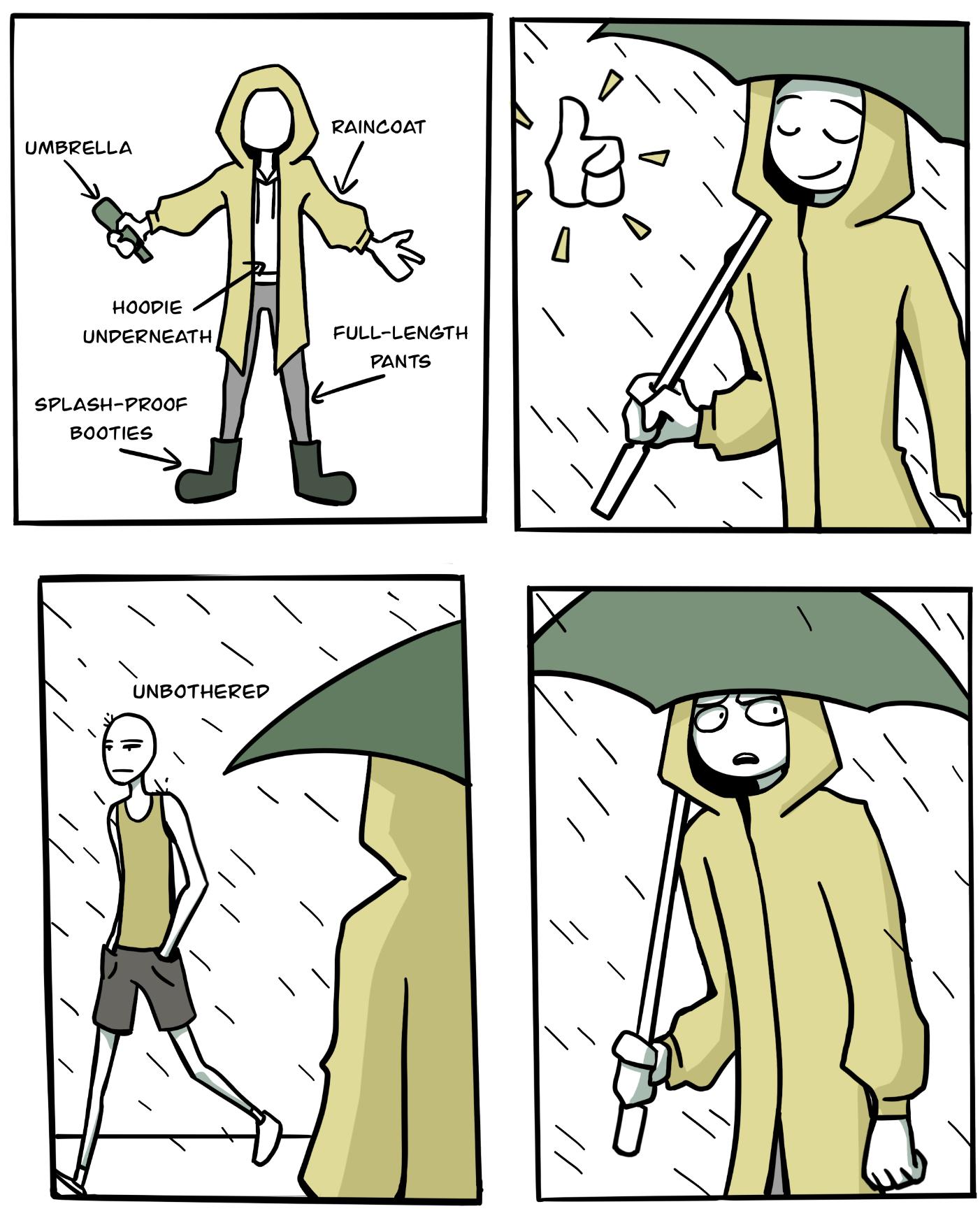 BY LIDYA SHCHERBAKOVA lvshcherbakova@ucdavis.edu
BY LIDYA SHCHERBAKOVA lvshcherbakova@ucdavis.edu
Disclaimer: This cartoon is humor and/or satire, and its content is purely fictional. The story and names of “sources” are fictionalized.
SENATE FROM PAGE 8
The Senate next moved to consider old legislation. SR #3 asked the Senate to show their support for Unitrans’s transition to electric buses. Such a show of support would be used by Unitrans for a grant that would help them replace their current diesel double-decker buses with battery-powered double-decker buses. There were numerous public comments in support of this resolution, including the Unitrans transit planning manager, who wrote in to remind the Senate of the pollution caused by the
current diesel buses. After brief deliberation, the resolution passed unanimously.
Amendments to the budget were then considered, starting with a decrease in allocated money for The Pantry’s office and mail budget. The change was unanimously approved.
Next came changes to the Picnic Day budget. Previously, the Doxie Derby event organizers were paid to be at Picnic Day, which is not the case for any other organizers at the event. The change, which will make the Doxie Derby organizer position unpaid by ASUCD, was unanimously approved.
The Gender and Sexuality Committee members, who are in charge of the Pride Festival on campus, requested a change that would allocate
$3,830 of their $6,169 budget to paying Pride Festival chairpersons in charge of organizing the event for winter and spring quarters.
The change was approved unanimously by the Senate.
The final budget amendment added more money to the equipment rental budget for the Whole Earth Festival. The change was unanimously approved. SB #41 was the last piece of old legislation on the agenda. The bill, proposed by Fujimoto, sought to clarify the use of injunctions by the Judicial Council on legislation.
The bill was passed unanimously. Eden adjourned the meeting at 10:19 p.m.
Scan to apply to work at The California Aggie! WORK FOR US Open positions include editor-in-chief and distribution manager. For more information contact editor@ theaggie.org. THE CALIFORNIA AGGIE THURSDAY, JANUARY 26, 2023 | 5
EDITORIAL
JOANNE SUN / AGGIE
ARTS & CULTURE
‘The Sex Lives of College Girls’ normalizes the quirkiness of sex
People from all backgrounds can find joy in the show that captures a shared college experience
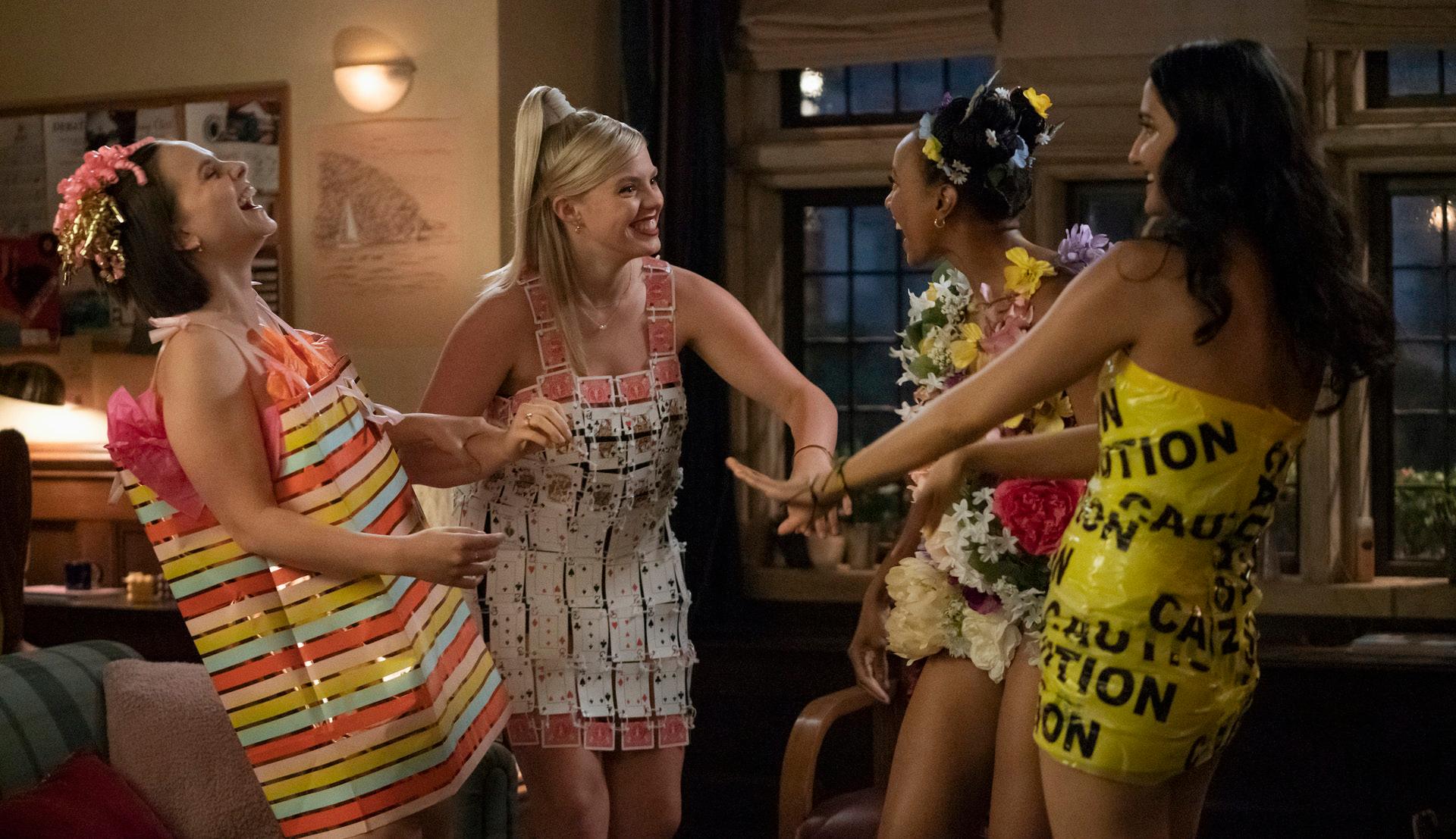 BY ANA BACH
BY ANA BACH
arts@theaggie.org

Mindy Kaling’s hit HBO series
“The Sex Lives of College Girls” has left Gen Z hysterical with laughter and has been deemed a “warm-hearted romp on campus” by Rotten Tomatoes, scoring a 97% on the Tomatometer.
Kaling’s witty writing wonderfully — and realistically — uses sex as a form of comedic relief throughout the show. Oftentimes, the media portrays sex in an idyllic way, but it is also often accompanied by the overwhelming pressure to make the moment “measure up” to certain expectations for college students, which the characters in Sex Lives of College Girls display.
“Euphoria,” another HBO original, comes to mind when thinking about exaggerated, intense sexual moments between characters.
A reason why many shows may capture an unrealistic intensity and
dramatization in sex scenes is for the beauty of the cinematography, but this can be a reason why the sex seems so performative. “The Sex Lives of College Girls,” on the other hand, shows its characters in sexual situations without exaggerating the performance for the viewer, which leads to some awkward, but more relatable, moments.
Eileen Wang, a fifth-year nutrition major at UC Davis, said that the portrayal of sex in the show represents intimacy in a positive way.

“Because the four main characters are navigating life as first-year college students, the show does a really good job of breaking down platonic sex lives for women that are new to this lifestyle,” Wang said.
Wang also highlighted the specific ways in which the characters challenge social stereotypes based on their external characteristics in the show.
For example, Reneé Rapp’s character, Leighton Murray, is a preppy, elitist white woman, but she still struggles
Commentary: ‘Acting accordingly’ isn’t the same as being ‘fake’
Sometimes acting can promote growth over conflict
with embracing her sexual identity.
“Leighton’s attributes are a great addition to the show because [they] dismiss college lesbian stereotypes,” Wang said.
As a viewer who is also in the process of shaping her identity in college, Wang expressed her gratitude for Leighton’s character.
“I appreciated this show because I feel like I could resonate with every character, especially Leighton having trouble coming out while worried about how this would define who she is when it’s just sexuality,” Wang said.
“The Sex Lives of College Girls” manages to bridge the gap between women from all walks of life — not just its Gen Z target audience — by depicting realistic sexual scenarios without pressure to uphold any social expectations. If you are looking for a new show full of sitcom humor, heartfelt moments and awkward sex, this show might be right up your alley.
BY RUMA POUDELL arts@theaggie.org
Do you know about Leonardo DiCaprio — the guy who dies in “The Titanic?” I’m sorry for spoiling that. But really, you should’ve watched that movie by now. Maybe Nicolas Cage? He was the lead actor in the movie “National Treasure.” If these stars don’t ring a bell, don’t worry about it. That just means you don’t know some of my past celebrity crushes, which saves me embarrassment (especially that second one).
The beautiful thing about acting is that you can mold yourself into a new character and snap out of it once you have finished playing your role.
Many real-life scenarios require you to adopt that same kind of versatility. It’s critical to infuse your personality into social and personal situations in such a manner that is congenial while still authentically expressive.
For example, when you don’t have the best relationship with someone, sometimes it is best to present yourself pleasantly in their presence, as to avoid causing drama or being deceitful.
What I call “acting accordingly,” or putting on a performance to some degree, is necessary to function in certain social situations. Being fake and two-faced is entirely separate from presenting yourself in a manner that matches what you want to emanate, even if doing so doesn’t reveal everything about you with pure transparency.
To me, having that versatility is important to fulfilling the many demands of life. And, being versatile in nature to fit into any scenario at hand doesn’t make you “fake.”
You already play different roles in your everyday life — teacher or student, parent or child, speaker or listener, doctor or patient, to name a few. Each role you play requires careful consideration of what outcomes you want and how to present yourself to get them. This is not to be manipulative,
but rather to promote harmony in all aspects of life. This is where the art of acting comes into play.
In my life, my biggest role has been the role of Nepali-Fijian daughter. Growing up in America but raised by a culturally-acquainted family, I grappled with what it meant to be a daughter. Serving tea to guests, learning how to cook before my older brother, interacting with elder relatives — all of it took a certain level of performance that felt awkward at first.
But as I grew older, I realized that this role, and each time that I have performed it, has taught me valuable life skills.
As I grew into the role of “daughter” put into place in my family, I also learned to stand my ground in a dignified way when conflict arose and to connect with others authentically, all while being socially graceful.
All of this is to say that while “acting accordingly” is a useful framework to operate within as you perform your roles, it should not be placed above your needs. If you neglect serious emotions and views or abandon your personality in the name of promoting peace, that defeats its purpose. As you star in the movie that is your life, act to build character, not diminish it.
6 | THURSDAY, JANUARY 26, 2023 THE CALIFORNIA AGGIE
The cast of “The Sex Lives of College Girls,” Season
1 - Episode 10. (Courtesy of HBO Max / fair use)
AGGIE FILE $1,000 prize for research excellence in the biological sciences open to students in any of the four UC Davis colleges. Ronald and Lydia Baskin Research Award Deadline to apply: Feb. 15, 2023 bit.ly/CBSBaskin
Review: ‘Alice in Borderland’ delivers intensity in shocking series finale
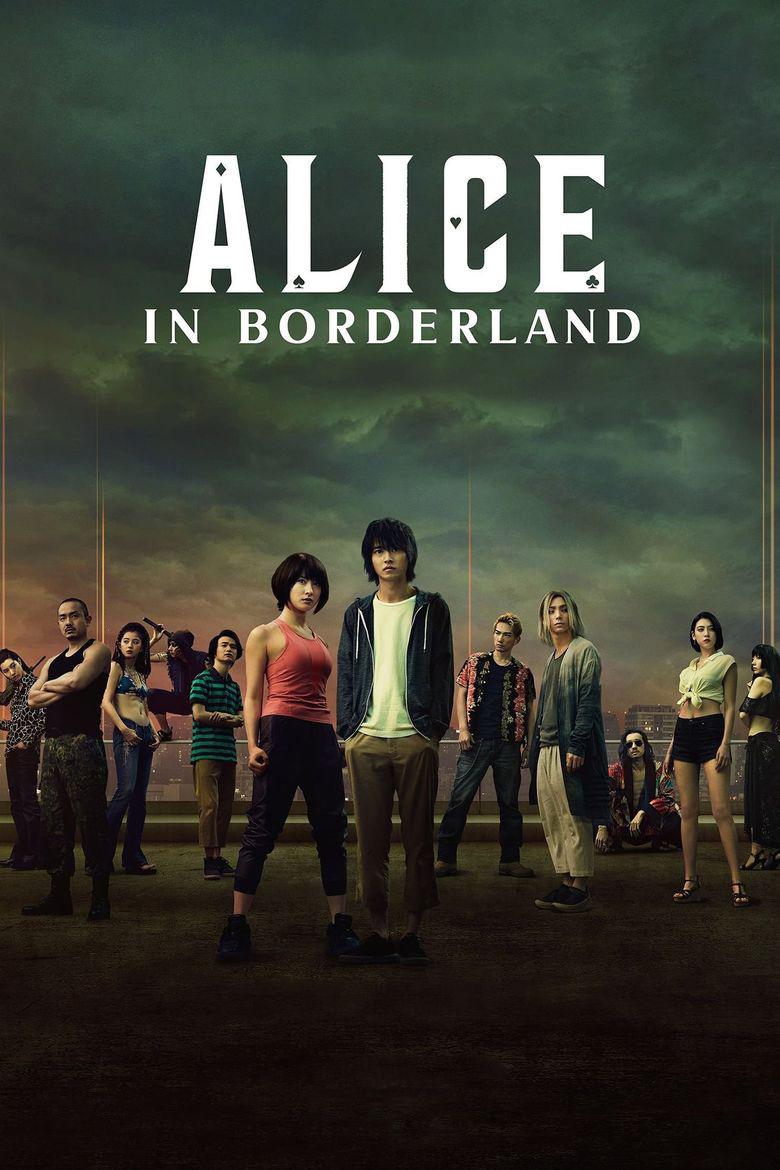
A recap and review of the live-action Japanese thriller’s second season
BY VIVI KIM arts@theaggie.org
The Arts Desk’s weekly picks for music, movies and more

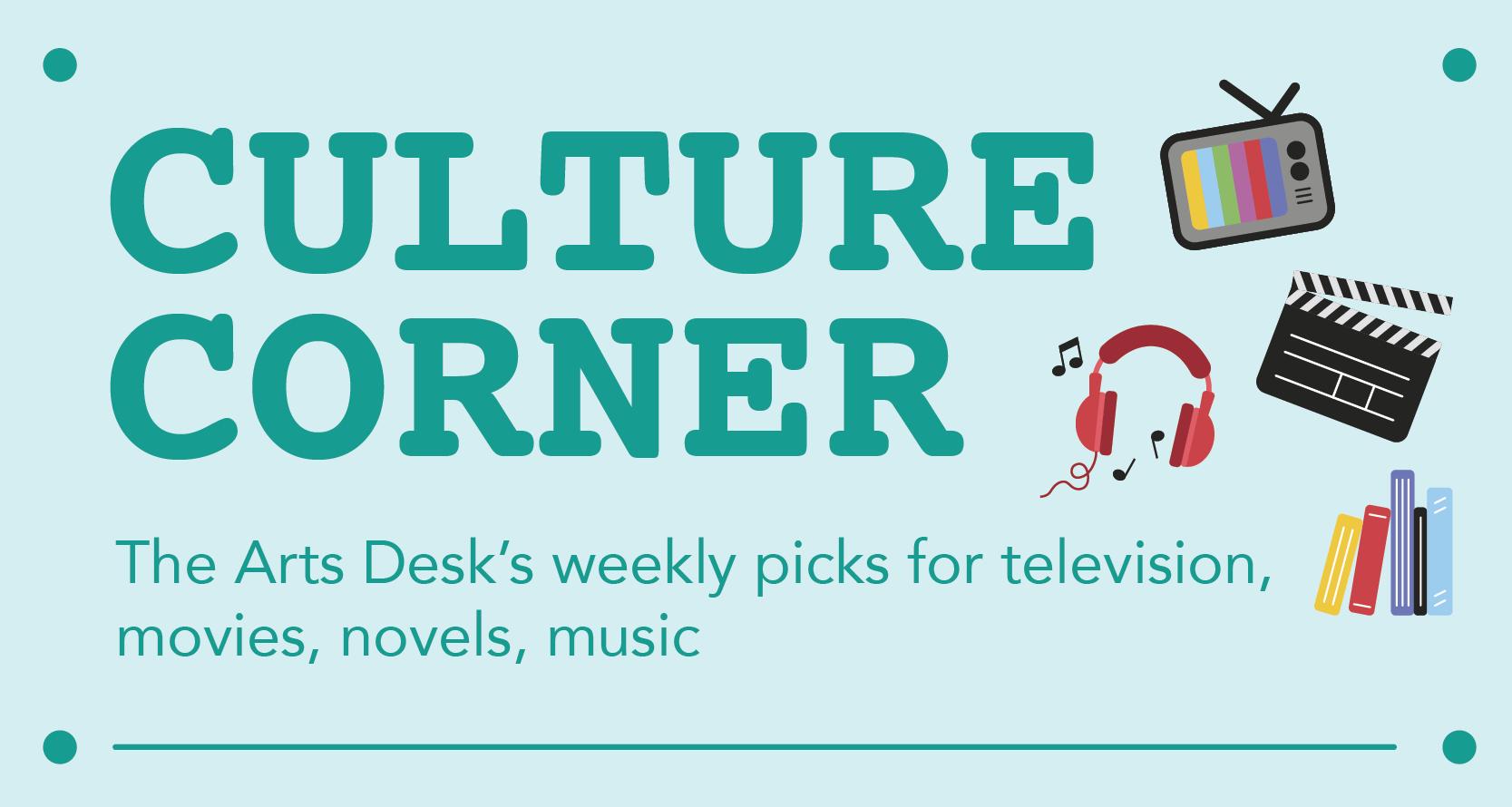 BY SARAH HAN arts@theaggie.org
BY SARAH HAN arts@theaggie.org
on the survival aspect of the series, season two dives much deeper into each character’s backstory through far more intense games. Throughout, a struggling Arisu also begins to be haunted by survivor’s guilt and all of the uncertainty surrounding the origin of the Borderlands.
Since season one ended with the players collecting all forty numbered cards, season two focuses on the collection of the face cards, each of which is represented by a real person. Two of the most notable face cards are the King of Spades and the Queen of Hearts. The King of Spades is a skilled mercenary who has been hunting down players since the first episode. Arusi and several other characters have nearly died at his hands and later end up fighting him in a final showdown during the last few episodes of season two.
The Queen of Hearts, or Mira, who some deem the central antagonist of the show, is the very last face card that Arisu and Usagi must defeat in order to escape the Borderlands. This final game takes up a whole episode and is definitely the most confusing yet. Rather than a game of physical endurance or intelligence, Mira simply requests that Arisu finish a game of croquet with her. During this game, however, Mira manipulates Arisu by cornering him into a state of existential dread and despair. As she feeds him multiple fake stories of how the Borderlands came to exist, Arisu begins to hallucinate that he is a mental hospital patient mourning the death of his friends.
Movie: Movie: “Parasite” dir. by Bong Joon-ho (2019)
“Parasite” is a South Korean film about social class and how it’s affected by human desires. The story is centered around the wealthy Park family and the poor Kim family who cross paths, resulting in bumpy relationships. Bong utilizes a lot of thematic elements to convey how money and society can transform humans into selfish and helpless beings. However, he also emphasizes the vulnerability of humans when they are at their lowest. I felt that this film opened my eyes to the challenges of social inequality and human nature, and more specifically, how social inequality brings out greed in people, ultimately triggering an inescapable cycle of wanting more and more. If you’re interested in these topics, I highly recommend checking out this film.
Song: “Chicken Tendies” by Clinton Kane (2022)
Clinton Kane debuted with his song “I Guess I’m in Love,” but “Chicken Tendies” is my personal favorite. The song is about his late mother, with whom he had a difficult relationship, and the lyrics certainly convey Kane’s anger, sorrow and hope. Although the title initially seems silly, the song has a deeper message. The entire song has a sorrowful tone but Kane also sings very passionately. I recommend this song as well as Kane’s other songs if you’re looking for new music to listen to.
TV Show: TV Show: “Modern Family” by Christopher Lloyd (2009-2020)

Last December, the highlyanticipated second season of “Alice in Borderland” was officially released on Netflix. The Japanese thriller series, originally based on a manga, depicts a boy named Arisu who is stuck in apocalyptic Tokyo, where he is forced to survive on life-threatening games.
During season one, Arisu and his two best friends, Chota and Karube, emerge from a public restroom after hiding from the police, only to find that Shibuya Crossing, a street that was bustling with people mere seconds ago, had been completely deserted.
After wandering the city, Arisu and his friends stumble upon a building that turns out to be a game arena, where they must gamble for their lives in a game of luck. Although Arisu’s quick wit helps them to win the game just in time, they ultimately realize a more disturbing truth. Everyone remaining in Tokyo is essentially a “player” in the “Borderlands” — a dystopian parallel of Tokyo — and in order to survive, they must continue to compete in a series of deadly challenges scattered around the city. Each game is represented by a
playing card. The category and difficulty level of the games is hinted at by the suit of the card. The more a player collects, the longer they have to survive before they are automatically killed by a laser beam shooting directly from the sky.
Up until the very last episode of the series, there doesn’t seem to be a human antagonist, since the challenge of most episodes is sheer survival. However, the playing cards play a crucial role in understanding how the Borderlands work. It is revealed in season one that in order to escape the Borderlands completely, a player must defeat every single game, collecting the card that comes with it.
Throughout the season, Arisu meets several new and interesting players who end up appearing in season two as well. Usagi, a flexible mountaineer, Arisu’s love interest and the main heroine of the show, is introduced just after Chota and Karube die sacrificing themselves for Arisu. Chishiya, who Arisu meets in a deadly game of hide-and-seek, is as cunning as he is intelligent and seems to prefer operating as a loner for most of the show.
While season one focused primarily
Though there were countless complex mind games, intense battle scenes and philosophical conversations that make season two worth the watch, the most intriguing part was the final episode, which revealed the true origin of the Borderlands. While most survivalthemed television shows and movies often have supernatural or dystopiarelated causes, the ending of “Alice in Borderland” had neither, which made it pleasantly surprising.
Many parts of the show incorporated a theme of life and death, both in a literal and figurative sense, and the final ending is no exception. It also explained the meaning behind the show’s title, which in retrospect, acted as a subtle clue to the plot twist itself. Looking closely enough, the victory of one character in season one led to numerous subsequent victories in season two, all of which made Arisu’s survival possible and in turn, ensured the survival of the remaining characters. The cyclical nature of life is portrayed this way throughout the show. As a result, what the series lacks in subtle plot development and pacing, it makes up for with deep-rooted themes and characters.

Ending this list with something a bit more lighthearted, “Modern Family” is a classic sitcom to enjoy with your loved ones or on your own. It portrays the life of the Pritchett family and how they handle the challenges of raising families of their own. This show, which ran on ABC for over 10 years, has too many episodes to pinpoint a favorite; however, it’s safe to say that any episode will leave you laughing. Whether you’re wanting to try out a new show or revisit a classic, I recommend adding “Modern Family” to your list.
Book: Book: “When Breath Becomes Air” by Paul Kalanithi (2016)
“When Breath Becomes Air” is the memoir of neurosurgeon Paul Kalanithi, who is dying of lung cancer. The book begins with his journey to find the answer to the question “What makes human life meaningful?” As he goes through his life, he experiences moral dilemmas in medicine and ultimately faces a medical condition of his own. I felt that this book tied together pure curiosity with the reality of life: Kalanithi wanted to know an answer to a question, but after searching for it, was challenged with his own health and found his own life at risk. Truly, I don’t know how to do this book justice — but all I can say is that it will leave you with a different perspective of the world. Whether you’re pursuing medicine or not, I highly recommend this book if you need to take a step back and appreciate life.
UC Davis Professor Emeritus Mike Henderson to hold first solo exhibition in 20 years
“Mike Henderson: Before the Fire, 1965-1985” will display never-before-seen work by the artist
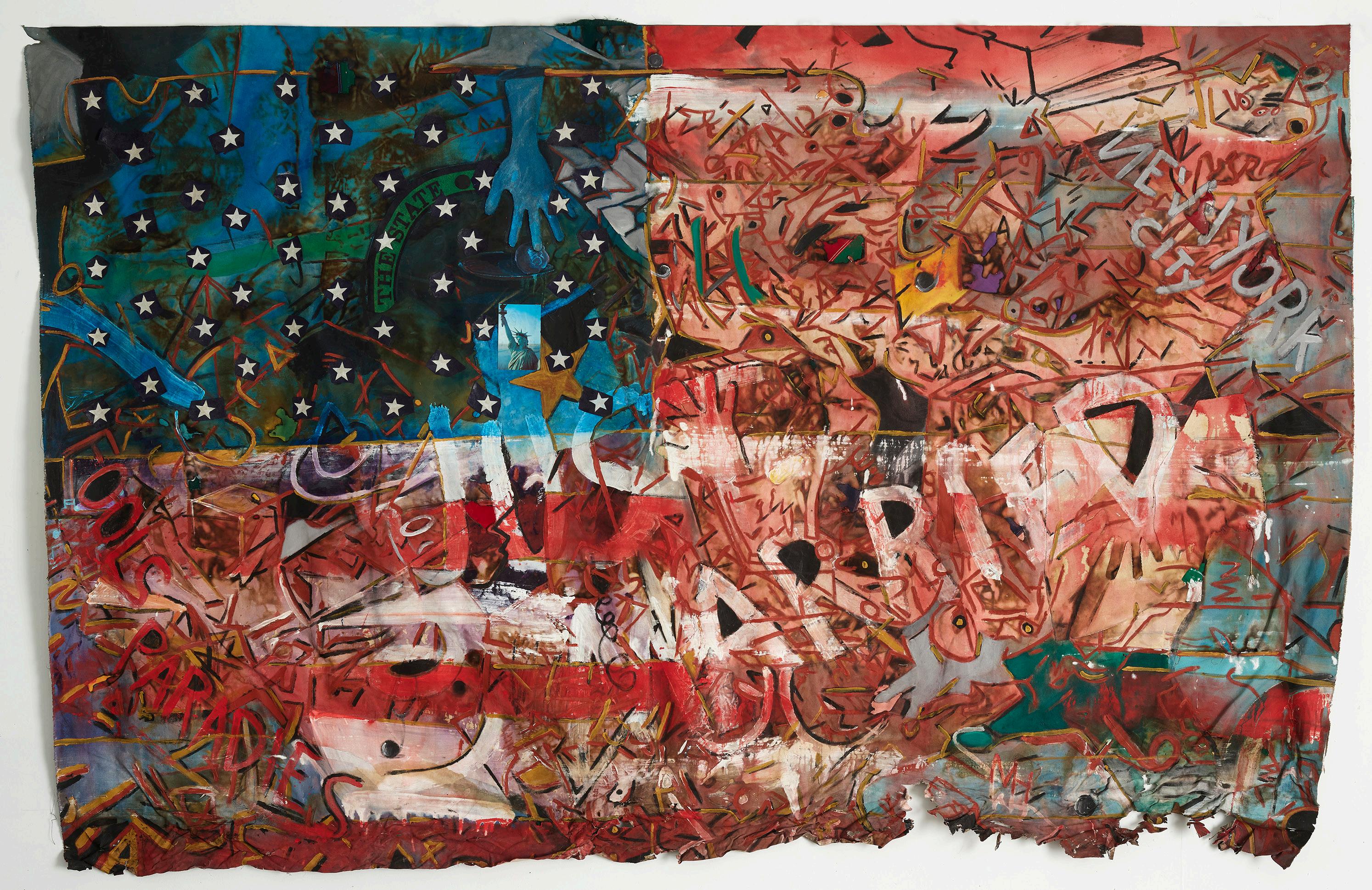 BY ADHITHI ANJALI arts@theaggie.org
BY ADHITHI ANJALI arts@theaggie.org
The exhibit that will open the new year at the Jan Shrem and Maria Manetti Shrem Museum celebrates the art and contributions of UC Davis
Professor Emeritus Mike Henderson.
Entitled “Mike Henderson: Before the Fire, 1965-1985,” the exhibition will display art previously thought lost alongside famous protest paintings, such as “Non-Violence, 1967.”
Based in San Francisco, Henderson has made profound contributions to modernist and abstract Californian art. He also worked as a professor and member of the UC Davis art faculty for 43 years before retiring in 2012.
Henderson, originally from Marshall, Missouri, earned his Bachelor of Fine Arts and Master of Fine Arts from the San Francisco Art Institute (SFAI). The Haines Gallery, which will also host some of Henderson’s paintings in their exhibition opening Jan. 21, describes how Henderson’s art moved from a figurative style to abstraction as he received his master’s in 1970 and grew as an artist. “Before the Fire” will provide a bridge to follow this shift through his now-restored art.
Henderson’s work offers an example of the ability of an artist to contribute to the political landscape of their time. Taking up the tools of experimentalism and abstraction, the exhibition will explore the upwelling of social movements that took place between the 1960s and 1980s through Henderson’s eyes. In the form of paint and experimental film, Henderson’s art brings visions of Black American life, as well as both an understanding of Henderson’s historical position and his imaginings of utopian futures.
The exhibition is curated with the help of Dan Nadel, former curator-atlarge at the Manetti Shrem Museum, and Sampada Aranke, who earned her
doctorate in performance studies at UC Davis in 2011. Aranke first encountered Henderson’s work while teaching at SFAI from 2015 to 2017. She and Nadel delved deeper into the contexts and story of his work while creating this collection.
The exhibition’s title stems from the
fire that damaged Henderson’s studio in 1985. The assumption was that all of the paintings in the studio were destroyed and lost in the fire; however, as Aranke said, “The museum has put in a lot of resources to conserve these paintings and bring them into the gallery.” Now, many of these paintings will be exhibited
for the first time and serve as an example of how institutional investment in local artists can be beneficial to communities as well.
Aranke also explained the use of fire as a subject and technique in the paintings.
“This idea comes from the

assumption that historians have of ‘a world on fire’ in the ‘60s and ‘70s,” Aranke said, referring to the groundswell of political activist movements of the time, such as Black Power.
HENDERSONPREVIEW on 8
THE CALIFORNIA AGGIE THURSDAY, JANUARY 26, 2023 | 7
Mike Henderson, Love it or Leave it, I Will Love it if You Leave it, 1976. Mixed media, 69 × 108 in. © Mike Henderson. Courtesy of the artist and Haines Gallery.
Photo by Robert Divers Herrick.
Release poster for Alice in Borderland. (Courtesy of Netflix / fair use)
UI GreenMetric ranks UC Davis most sustainable campus in North America for seventh year in a row
The ranking is based on multiple environmental measures that assess the overall sustainability of each campus
BY RACHEL GAUER campus@theaggie.org
UC Davis was ranked the No. 1 most sustainable campus in North America this year for the seventh year in a row, as well as placing fifth worldwide, according to a measure by UI GreenMetric.
The UI GreenMetric ranking, originally created in 2010, uses a point system based on several criteria to rank over 300 universities’ overall environmental sustainability efforts. Each university is ranked in several categories, including transportation, education and research, infrastructure, energy efficiency and climate change response, waste and water.
Camille Kirk, the director of sustainability and the campus sustainability planner at UC Davis, reflected on the university’s ranking.
“It is nice to be recognized internationally for our work to become more sustainable,” Kirk said. “It gives us an opportunity to pause and express [gratitude] for what we have done, and it also gives us nice motivation to continue our work together at UC Davis toward a more sustainable campus and world.”
Kirk noted that compared to last year, the university’s energy and climate change category scoring has improved. Last year, UC Davis received a 1650 score in the category. This year, the score jumped to 1775.
She attributed this increase to several projects that Davis has either implemented or improved during the past year, including the Unitrans bus electrification project, which introduced six electric buses to the system in September.
Kirk also said that projects like the Sheepmowers — a research project in which sheep graze in various grassy areas on campus as an alternative to traditional mowing — are particularly important because they engage the
campus community in sustainability efforts.
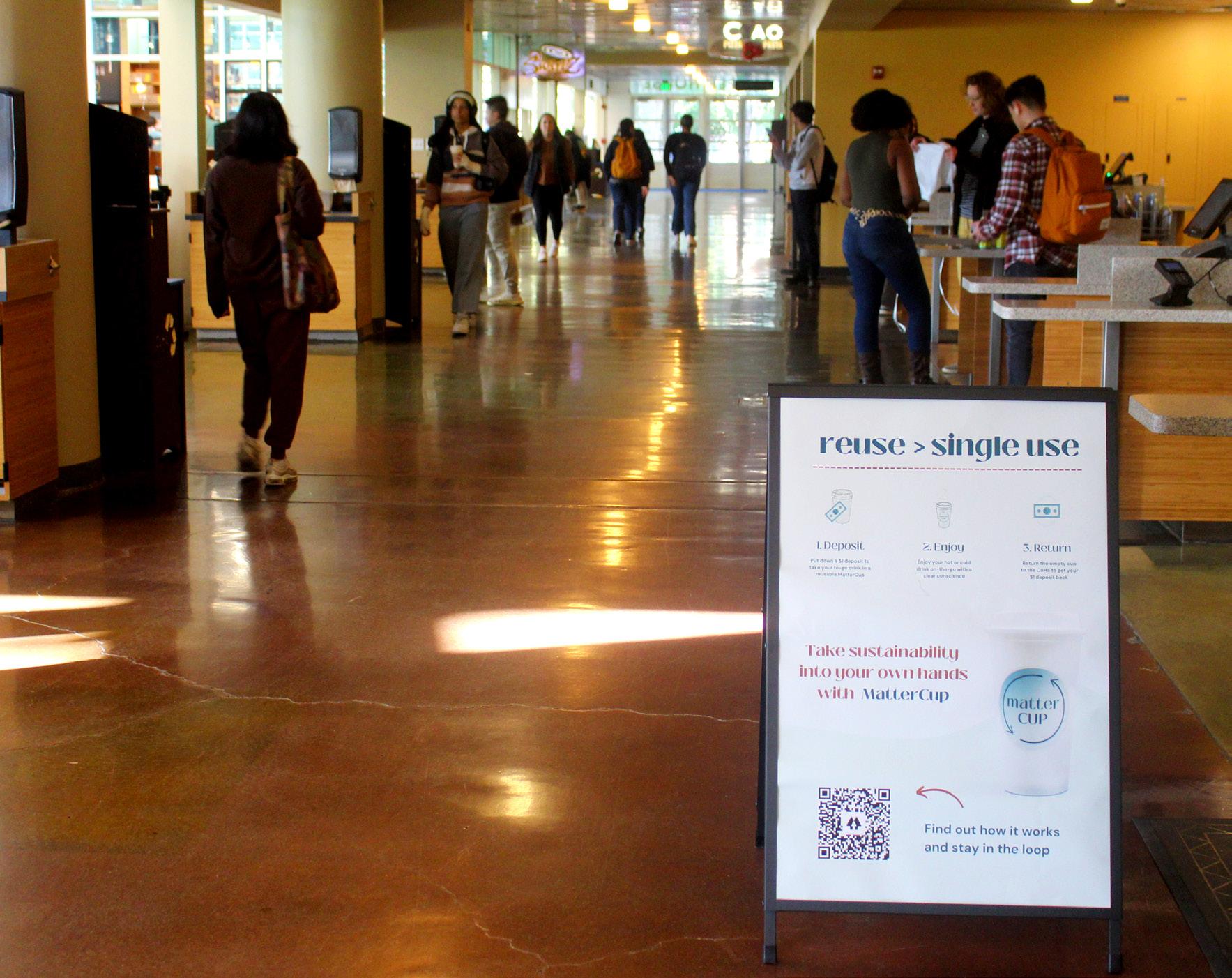
“A key strength and ‘secret sauce’ behind sustainability work at UC Davis is the strong amount of collaboration among many partners and stakeholders — staff, faculty, students and community members,” Kirk said. “It takes all of us to make a more sustainable UC Davis.”
Amelia Swanson, who serves as the co-president of the Zero Waste and Sustainability Club, also attributed UC Davis’s overarching sustainability to campus-wide involvement.
“I feel like we have a lot of organizations and classes on campus that make people very motivated to make campus more sustainable,” Swanson said. “We also have so many environmental sciences majors, and I think having a bigger population that is aware and wants to make a difference in the environment helps a lot.”
The Zero Waste and Sustainability Club receives funding from The Green Initiative Fund (TGIF), which is a campus program that strives to fund student-led projects that promote sustainability, according to their website. Many of the sustainable projects on campus are supported by the fund, as they award between $100,000 and $200,000 each academic year to various campus projects.
Morgan Olsen, a second-year design major, spoke about her environment project that received funding from TGIF. Olsen added compost bins in every dorm room of Kearney Hall, and plans to compare Kearney’s waste to that of another hall in order to assess the impact of the bins.
“My project [aims] to reduce carbon emissions by studying if first-year students compost more when they have access to compost bins in their dorm,”
Olsen said. “If the increased access to composting [decreases] the waste going to landfills, student housing can expand to include small compost bins in every first-year dorm.” Kelly Abey, who serves as the vice chair of the Environmental Policy and Planning Commission (EPPC) and is also a committee member of TGIF, explained the contributions of TGIF to the university’s overall sustainability.
Senate approves budget changes in Jan. 19 meeting
More money allocated to Mental Health Initiative Conference, Whole Earth Festival
BY SYDNEY AMESTOY campus@theaggie.org
The Jan. 19 Senate meeting was called to order by Vice President JT Eden at 6:14 p.m. He called roll and read the UC Davis Land Acknowledgement before getting into the night’s schedule.
First on the agenda was the confirmation of the DREAM Committee chairperson. Mariam Hernandez Mendoza is a past DREAM committee member and a biological sciences major and has helped conduct scholarship workshops in the committee that raise awareness of resources for AB540 and undocumented students.
After a round of questions from the Senate, Hernandez was unanimously confirmed.
The Research and Data Committee (R&DC) had 11 nominees for volunteer committee members, who attended the meeting via Zoom. All candidates, except two who could not attend the confirmation meeting, were confirmed unanimously.
The other two candidates for the R&DC were originally virtually confirmed, despite their absence, however, such a move was objected to. The remaining candidates will return for next week’s Senate meeting to be confirmed.
Another DREAM Committee member nominee was virtually confirmed after the R&DC nominations.
The Club Finance Council (CFC) then gave its quarterly report to the Senate. The council, which exists to help fund student organizations, received 16 applications from 15 registered student organizations in 2022. Overall, last year’s funding sent out by the council totalled $12,430 of the ASUCD budget.
The council’s winter quarter application cycle will close on Feb. 17, and the spring quarter application cycle will open on March 27, according to the presentation. Following the CFC presentation, the Senate moved into public comments.
Senator Stephen Fujimoto announced his plans to host a listening session on Feb. 7 at the CoHo for student workers to voice concerns and comments they might have that the ASUCD Senate can address.
Following public comments came the Office of the International Student Representative’s (OISR) quarterly report, presented by ISR Kevin Zhou.
The OISR is currently in the process of finishing a menu translation for the CoHo and will seek to translate documents for other ASUCD units in the future, according to Zhou.
The office is also seeking to help international students secure housing both on and off campus via workshops held for current students in residence halls. According to Zhou, this idea was inspired by numerous reports of housing scams targeting international students in the past year.
CHRISTINA LIU / AGGIE
“Currently, we’re targeting freshman students because a lot of international students right now are living in the freshmen dorms,” Zhou said. “We haven’t really considered transfer students yet [but] we can work with the [Office of the Transfer Student Representative].”
Following the OISR quarterly report, the Senate called a 15-minute break at 7:49 p.m. Next on the agenda were elected officer reports, during which members of the Senate table gave reports on their activity in the past week.

Senator Janesh Gupta attended a meeting exploring ways to digitize some of the Senate’s operations, including new ways to organize bills and bylaws.
Senator Francisco Ojeda announced to the Senate that a meeting will be held the week of Jan. 23 with Chancellor Gary May, in case any senator would like to attend.
Fujimoto received price information for his planned student-worker listening session at the CoHo. He also advocated for SB #4, a California senate bill that addresses housing planning and zoning for higher education institutions. Eden announced that there will be vacancies for certain positions in the executive branch of ASUCD opening up soon.
Transfer Student Representative Logan Ueno discussed his plans for a sticker drop and his Instagram posts advertising the upcoming drop. The Senate then moved to discuss the status of new legislation.
SB #47, a bill that seeks to move the confirmation process of unpaid volunteer positions into the consent calendar section of Senate meetings in order to boost efficiency, was sent to the Internal Affairs Commission (IAC) for further consideration.
SB #46, which would have the Senate President Pro Tempore give a quarterly report as an act of transparency, was also sent to the IAC.
SB #48 was an emergency piece of legislation. The bill sought to provide the ASUCD Mental Health Initiative (MHI) money for food vouchers for their conference this past weekend, after previously-allocated money in the budget fell short of the estimated costs. The initiative’s estimate for food for their yearly mental health conference totaled $11,430, $7,430 over their budget. The initiative had enough to pay $1,500 over its budget but sought the assistance of the Senate to purchase meal vouchers for food trucks at the event. “This event is a flagship way that ASUCD promotes mental health advocacy,” Eden said. “[The MHI] wants to give out food truck vouchers for the two-day event so everyone can eat. [They] offered to spend all of their loose money, which is supposed to be for events for their staff, and they’re doing their part. We can do our part to help them.”
“It is a large sum of money, and I really wish it could have been handled during budget hearings, or at least earlier in the year,” Senator Zeph Schnelbach said. “But I would like to remind the table that we have an insane amount of money for this entire year, of which only three or four people around this table actually tap into. I personally see no issue with putting this money towards this unit.”
“Since [the MHI] has already been allocated $4,000, this additional $6,000 would mean that we are essentially approving a $10,000 line item here [...] for one event, one conference, $15 per person,” Fujimoto said. “I understand the importance of this conference and of mental health, but there are other potential ways we can use this money.” Deliberation continued on the bill, but was ultimately passed 11-0-1, with only Fujimoto abstaining.
SENATE on 5
“TGIF reinforces direct undergraduate involvement in sustainability on campus, which also benefits the rest of the campus population,” Abey said. “The committee is also run by majority undergraduate students.”
Abey noted that during the recent ASUCD election, TGIF’s fee renewal measure failed due to low voter turnout. Abey said that there could
GRADEDEADLINE FROM THE COVER
The second demand is in response to a survey conducted by UC-AFT of 260 members, in which 66% responded that they felt compelled to perform additional labor due to the strike, as the work normally done by TAs or graduate students became their responsibility.
“We are asking for fair compensation for this extra work,” Arosteguy said. “We have passed a proposal to the university and are awaiting their response.”
He went on to say that their next step is working towards the California Public Employment Relations Board (PERB) — which administers and enforces HEERA — issuing a complaint in this case.
“Once we receive the complaint, the normal process is to enter into settlement conferences with the university where we can come to a fair agreement over the outstanding issues,” Arosteguy said.
As part of the grade deadline extension, Croughan’s office offered funding for lecturers who need support to complete grading.
“I am extending my offer to provide funding for hiring extra grading help to assist instructors of record impacted by the labor stoppage,” Croughan said
REMEMBERROE FROM THE COVER
Aguiar-Curry discussed the importance of educating people about reproductive services that are still available. “We should be doing more of these kinds of events where people can get educated,” Aguiar-Curry said. “I don’t think people understand the whole conversation about abortion, so it’s really important that we do these events. It takes brave men and women to come and do these because not everybody agrees and they feel like they’ve been left out so many
HENDERSONPREVIEW FROM PAGE 7
Additionally, fire was literally used in creating these works. Aranke described how Henderson would create burn tracks and marks on his canvases, further highlighting the vigor and experimentation that underlies his art.
Aranke hopes that students who visit the exhibition will leave with a new understanding and appreciation of Henderson’s experimentation and his message.
“His art is very ambidextrous, experimenting across media at a historical moment where there is a groundswell of social movements and activism,” Aranke said. “This exhibit will encounter how an artist like
be a significant impact on campus sustainability if the measure does not pass during the coming spring 2023 election.
“If we were to fail once more, TGIF will be forced to sunset, which would severely damage the sustainability credibility UC Davis has built for itself and would mean less undergraduate sustainability efforts on campus,” Abey said.
in her email. “Instructors of record who would like to request support should contact their department chair or supervisor to coordinate with their dean’s office immediately.”
“It is unclear whether there are enough of these readers to cover all of the remaining work, which is another reason we are asking for fair compensation for any lecturer who ends up doing this extra work,” Arosteguy said.
Meanwhile, many students still have not received their grades.
Ashton Yeremian, a thirdyear sociology major, has one NG outstanding from fall quarter in his political sociology class. Due to this, he did not meet the unit requirement for the quarter.
“Most people in the class were supportive of the strike,” Yeremian said. “Because many of us are going to be grad students, we understood that sometimes people have to suffer some inconveniences in order to get proper living conditions.”
Once the strike started, Yeremian said that his professor started holding classes on the picket line.
“For me, I’m not very affected by [the late grades], so it’s easy for me to say that,” Yeremian said. “I can be understanding that the grades are taking a while, but I can see how if you’re already on academic probation and there are no grades coming up, that would be pretty scary for a lot of people.”
times, so I think it’s the more we get out and educate people, the more we show that we have compassion and understanding. That is what’s going to change the world.”
Aguiar-Curry encouraged people to get involved and protect abortion access for all those affected.
“As the late Ruth Bader Ginsburg said, ‘The decision whether or not to bear a child is central to a woman’s life, to her well-being and her dignity. It is a decision she must make for herself,’” Aguilar-Curry said. “If you’re as angry as I am, and I don’t get mad very often, but I get organized. And let’s get ruthless, let’s fight this. This is the fight of our lives, not just for us, but for future generations.”
[Henderson] is responding to those social and political moments from the position of a Black artist.”
Aranke also explained the intersection of art, form, politics and history.
“An exhibition like this at a university museum like the Shrem offers an opportunity to have more dialogue about art and artmaking as an archival practice, a historic practice,” Aranke said. The exhibition will debut on Jan. 29 at the Manetti Shrem Museum, where Henderson and Chancellor Gary May will hold a public opening event from 2:30 p.m. to 5 p.m. “Before the Fire” will be available for viewing until June 25. For more information, an accompanying catalog edited by Aranke and Nadel is available through UC Press.
8 | THURSDAY, JANUARY 26, 2023 THE CALIFORNIA AGGIE
The “Matter Cup” project is one of the many ways in which UC Davis leads in sustainability. (Jersain Medina/ Aggie)
Sudoku



Enter digits from 1 to 9 into the blank spaces. Every row, column and 3x3 square must contain each digit. Each Sudoku has a unique solution that can be reached logically without guessing.
Crossword
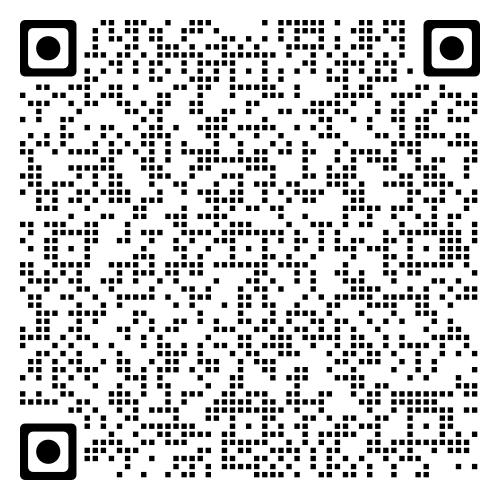
THURSDAY, JANUARY 26, 2023 | 9 THE CALIFORNIA AGGIE
Answer to previous puzzle 1/19/22 r edu c e . r eu s e . r e cycl e . T h e a gg i e Answer to previous puzzle 1/19/22 Scan to upload your completed crossword for the chance to win a prize!



10 | THURSDAY, JANUARY 26, 2023 THE CALIFORNIA AGGIE C ai1674513375141_AMH2023_AggieAd_Print.pdf 1 1/23/23 2:36 PM
New study from UC Davis Health highlights concerning rates of late-stage cervical cancer in
patients
over 65 years old
Current screening guidelines do not sufficiently assess this demographic for cervical cancer
BY LILLY ACKERMAN science@theaggie.org
A recent study by researchers at UC Davis Health’s Comprehensive Cancer Center found that nearly one in five new cervical cancer diagnoses in California are in patients over the age of 65 and that these cases are usually late-stage and have low survival outcomes.
According to Julianne Cooley, the lead author of the study and a senior statistician at UC Davis Health, this finding is contrary to current guidelines for cervical cancer screenings in patients who are 65 years of age and older.
“Current guidelines recommend not screening women [over] 65 years [old] with history of normal Pap [Pap smear] and/or HPV [Human Papillomavirus] tests,” Cooley said via email. “However, we found that nearly 1 in 5 new cervical cancer diagnoses are among women [older than] 65. Furthermore, women in this age group are usually diagnosed late stage (71%) and have very poor survival compared to other age groups.”
These higher-risk cases found in the study suggest that guidelines are missing a demographic that still needs to be screened, especially since consistent screening can catch an earlystage disease, which has a much higher survival rate than late-stage disease.
Patients over the age of 65 might consider resuming regular screenings to mitigate the risks identified by the study.
“Screening can prevent or detect cervical cancer at stage I, when the chance of survival is excellent,” Cooley
UC
said. “So, women of any age who are not up-to-date on cervical cancer screenings should schedule a screening and make sure to follow up on any abnormal results.”
Prior studies have shown that many patients of all ages are not up to date with screenings in the first place, so the reason for an increase in late-stage disease in patients over the age of 65 might be due to the lack of consistent screening even before they reach this age, according to Cooley.
It is therefore critical that patients in this age range are evaluated for prior screening history, and any abnormal results are followed up with more care.
“There remains a significant burden of advanced cervical cancer in women [older than] 65,” the study reads.
“Efforts should be made to better understand how the current screening paradigm is failing women of 65 years and older. Future work should focus on determining past screening history, lapses in follow-up care, and noninvasive testing approaches.”
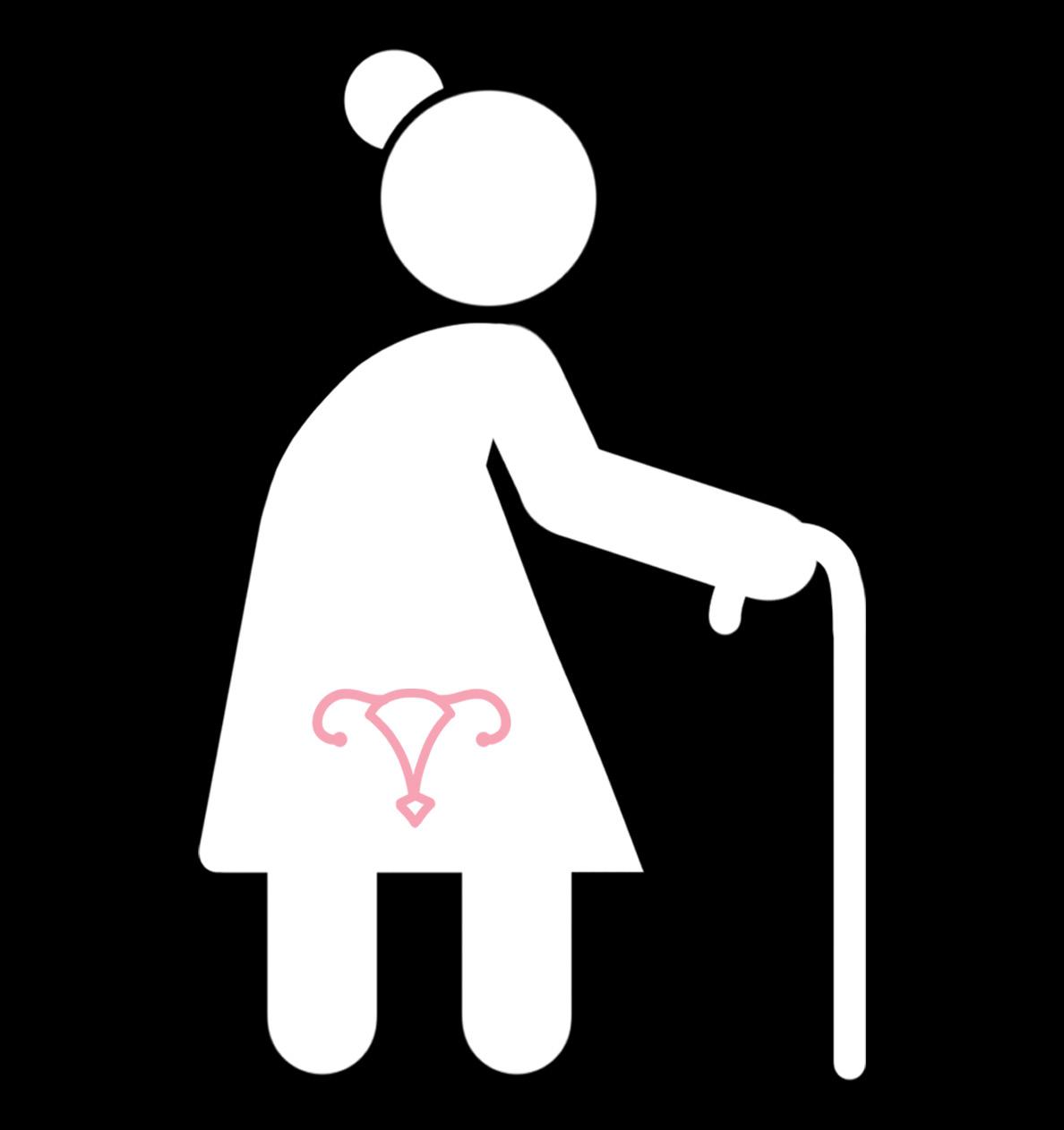
The authors hope to emphasize the importance of regular screening leading up to the 65-year mark, as well as to encourage those older to be tested again, especially if they were behind on screenings before they reached this age. In doing so, they hope to lessen the alarming number of late-stage diagnoses in this demographic.
Davis students address period poverty
campus, in the surrounding community
on
Students say more resources are needed to provide adequate menstrual support at UC Davis
BY MARIA MARTINEZ CASTRO features@theaggie.org
With the passing of the Menstrual Equity Act in 2021 and the creation of the Menstrual Equity Task Force, UC Davis students have had increased access to free menstrual products over the past few years.

The progress in period equity largely comes from the efforts of students and student groups on campus, such as Davis Period.
While students and student groups have made progress to address period inequities at UC Davis, period poverty still manifests on campus and into students’ homes and communities.
Gabby Tirsell, a fourth-year economics major and co-founder and acting CEO of U-Cycle, said that seeing the lack of free menstrual products for students on campus led her and her business team to establish their company.
“U-Cycle started as an effort to get more period supplies to students who need them at UC Davis,” Tirsell said. “I did a lot of interviews with The Pantry
and other student resources that provide these free supplies [...] It always felt like we were in some sort of period supplies deficit, which is a major problem, especially for students who need it. If you look around campus, we have these free distribution bins that are constantly empty and unlocatable.”
Tirsell’s company focuses on delivering a custom box of period supplies to subscribers, while a portion of the proceeds is used to donate period supplies to UC Davis students.
Eli Singh, a third-year neurology, physiology and behavior major and the public relations and social media director for Davis Period, said that period poverty is seen on campus through the high demand for period supplies.
“The student population also experiences period poverty on some level because if there was no period poverty within the student population, The Pantry wouldn’t offer products,” Singh said. “There is a need. We did a
survey [...] there was a portion of the population on campus who don’t know for sure if they were going to be able to afford products for their next cycle.”
Among other resource inequities, access to menstrual products is often not deemed a necessity or even considered, Singh said.
“I think it’s probably easier to ignore than other types of poverty because it’s a hidden thing,” Singh said. “I feel like people are more likely to talk about having trouble budgeting or with groceries — things that seem super essential — even though period products are essential.”
Tirsell said that student groups on campus providing free period supplies are doing their best to support menstruators despite the limited access to supplies.
“The student legislators at Davis are doing the best that they can with the resources provided [...] I’ve talked multiple times with The Pantry, and they’re doing a killer job of providing
those, but they always just say, ‘We run out,’ because the demand outweighs the supply, like a bazillion times over. Everybody wants these things that aren’t always the most affordable or accessible.”
Singh said that, while students want to see a wider distribution of period resources on campus, period poverty needs to be addressed one step at a time.
“This year, we’re trying to see if the budget that was previously allocated for the Menstrual Equity Task Force is enough to keep the products stocked in the places where there already are dispensers,” Singh said. “I know that a lot of people are pushing for more dispensers [...] But right now, it’s better to have dispensers that are stocked than have dispensers everywhere, but none of them have anything.”
Pravani Manchikanti, a third-year neurology, physiology and behavior major and the operation and donations director at Davis Period, said that when more resources are allocated to student
centers, it is also beneficial for the surrounding community. Organizations such as Davis Period can also address period poverty outside of campus. “Now that [The Pantry has] their own budget, and that’s definitely because of the push from both [students and organizations] to get the school to provide them with money [...] that means the donations that we collect can go to organizations that we donate to like domestic abuse shelters in [Sacramento] and Davis and national assault shelters,” Manchikanti said. As period equity continues to grow on campus, student centers and groups like Davis Period, The Pantry and U-Cycle will continue to support menstruators. “Students providing for other students — we just build a stronger community that way,” Singh said.
THE CALIFORNIA AGGIE THURSDAY, JANUARY 26, 2023 | 11
MIRANDA LEE / AGGIE
KELLIE LU / AGGIE
MEN’S BASKETBALL
The Highlanders end UC Davis’s four-game win streak
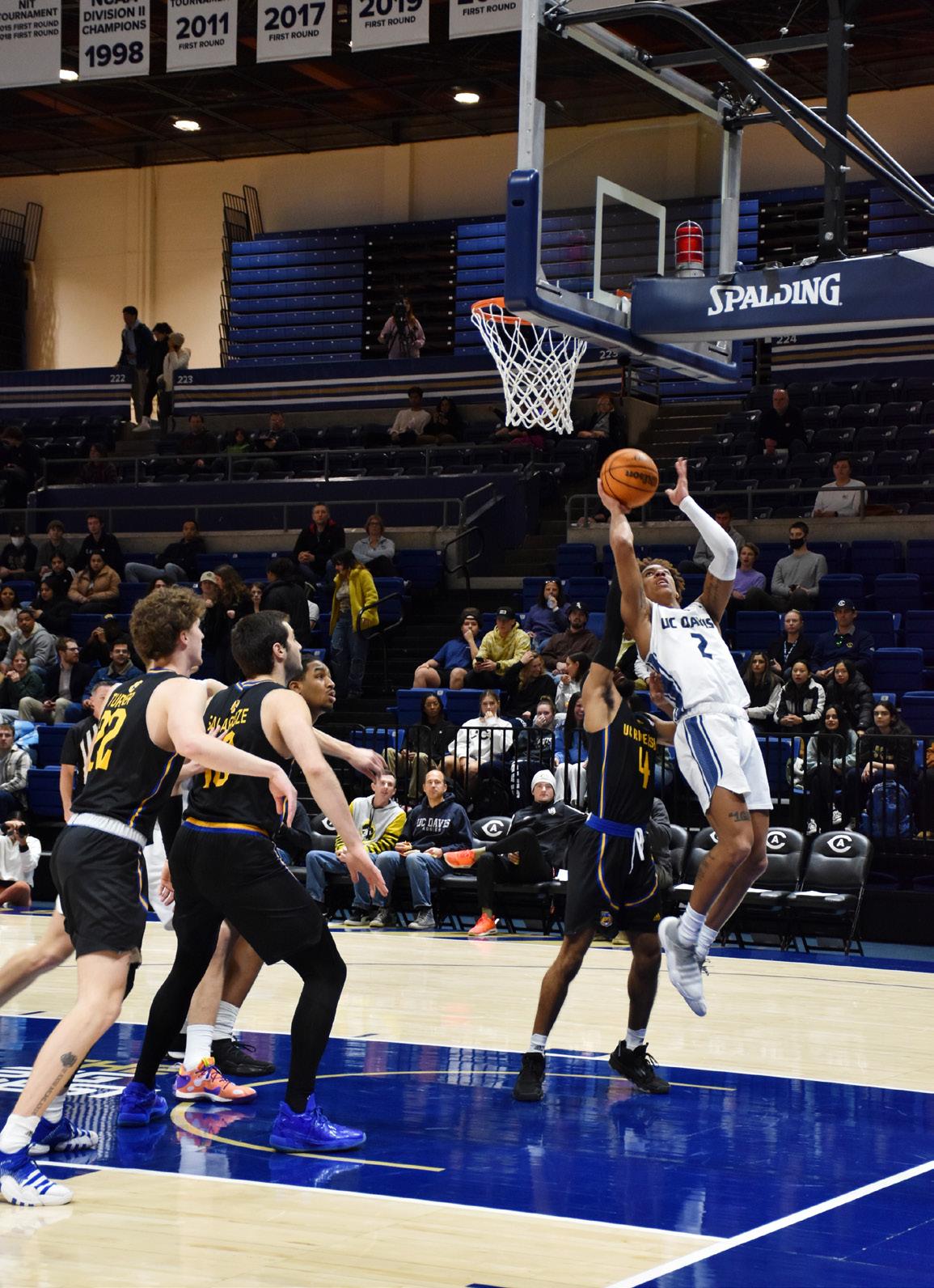
The Aggies’ lack of defensive adjustments in final moments cost them the game
BY MARLON ROLON sports@theaggie.org
UC Davis Men’s Basketball Head
Coach Jim Les has preached about taking care of the ball and making defensive stops over the course of the season. Last Thursday night at the University Credit Union Center, the Aggies did that for 39 minutes of play — until the last minute of the game.
“We had a couple of defensive lapses there at the end that ended up being the difference,” Les said. “We have to stop shooting ourselves in the foot at the end of the half and the end of the game.”
The Aggies contained UC Riverside fourth-year guard Zyon Pullin — who is tied for second in scoring in the Big West this season — to eight points throughout the game, but Pullin couldn’t be stopped when it mattered most. Pullin drove the ball into the paint and scored the game-winning shot with 2.4 seconds remaining, giving the Highlanders the 74-72 win.
“We wanted to force them to the left at the end, but he managed to drive to the right, which is his strength,” Les said. “They made one more play than we did.”
UC Davis (4-3 in conference play, 11-8 overall) ranks No. 10 in defense out of 11 teams in the Big West, and it was evident on Thursday night. However, they have a strong offense that ranks second in the conference, which kept them in the game against the top-seeded UC Riverside (7-1 in conference play, 14-6 overall).
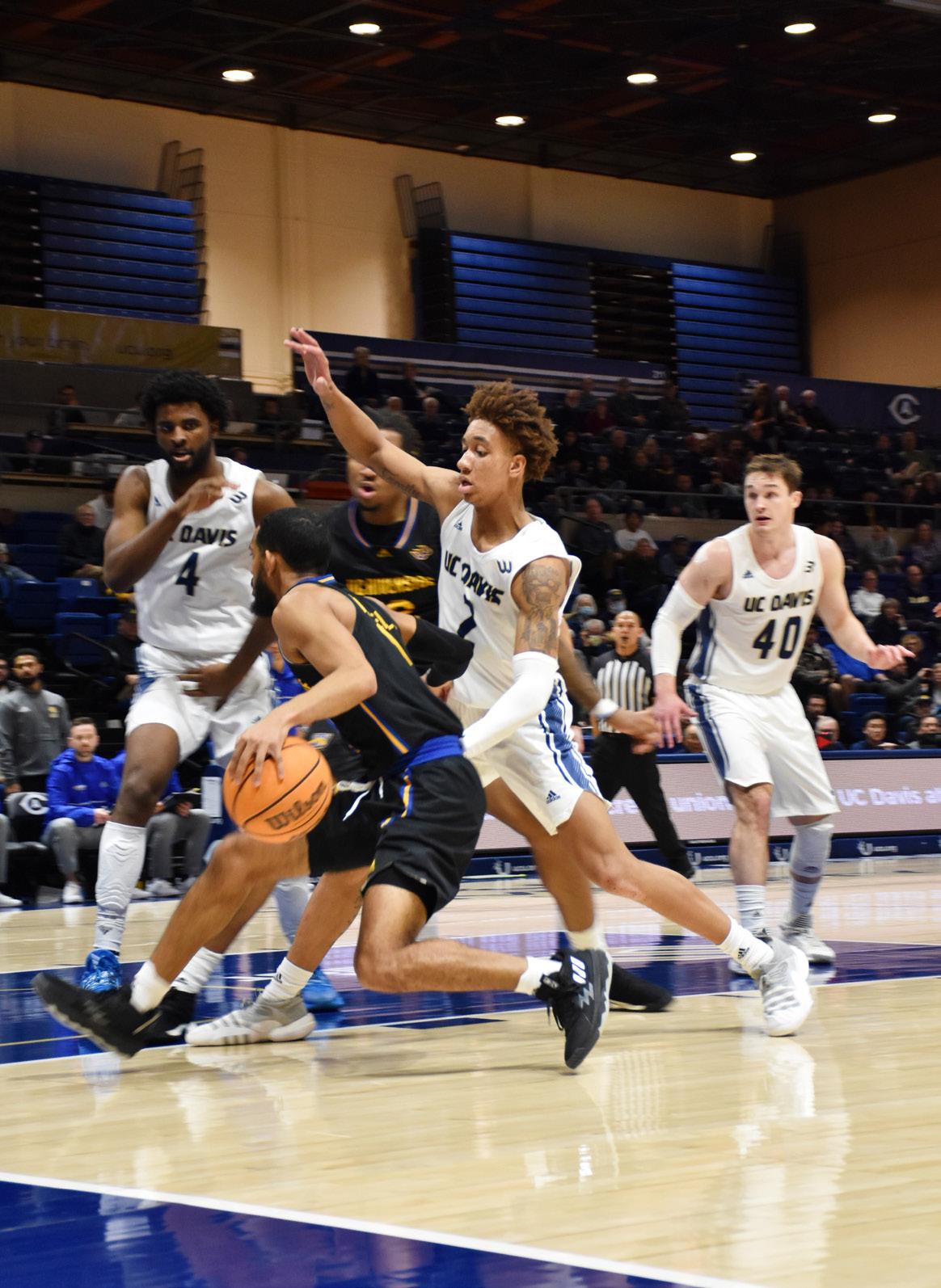
Three of the five starters scored in double digits for the Aggies. Fourth-year forward Christian Anigwe had 22 points along with seven rebounds, hird-year guard Elijah Pepper — who leads the Big West in scoring — had 19 points with six rebounds and Ty Johnson added 13 points and six rebounds.
“He’s our hardest worker and he’s been a really good vocal leader,” Les said about Pepper. “He sets an example every day in the classroom, in the weight room, out on the practice floor; it’s what we want Aggie basketball to look like.”
The Aggies got off to a strong start in the opening half, leading 11-4. Four Aggies contributed to that run — Anigwe, Pepper, second-year guard Leo DeBruh and third-year guard Kane Milling, who scored five points in 45 seconds.
The lead didn’t last long, though. UC Riverside stormed back with a 7-0 run to tie the game, 11-11. The Aggies were careless with the basketball, committing eight turnovers in the first half. The Highlanders took advantage
FOOTBALL
of the miscues from the home team, leading to a 31-24 lead with two minutes remaining in the first half.
Johnson — who is in seventh place in scoring in the Big West — struggled early with three turnovers. He shot 1-for-6 in 13 minutes of the first half, scoring a lone three-pointer. Johnson seemed visibly frustrated with his play, prompting Les to rotate substitution players often early on.
Those substitutions worked out well for the Aggies, with the bench scoring 12 points. Eight of those points came from Milling, who shot efficiently with his limited opportunities. DeBruhl, another rotational player from the bench, scored a layup off a fastbreak that helped cut the Aggies’ deficit to five.
However, graduate student guard Flynn Cameron quickly answered back for the Highlanders with a layup.
Cameron scored 10 points and added five rebounds in the first half, and the Aggies had a hard time defending the elusive player. Luckily for the Aggies, Pepper ended the half with a fastbreak, which provided some much-needed momentum and fired up the home crowd.
That momentum translated into the second half. Anigwe was on fire, scoring seven straight points for the Aggies to bring the score within two. A few plays later, Anigwe was fouled and converted one of two free throws, which gave UC Davis a one-point lead, 38-37.
The Highlanders’ depth proved to be the differentiating factor in the game though, even with Pullin locked down by the Aggie defense. Secondunit player and graduate student guard Jamal Hartwell II put up 14 points and Cameron added nine points for UC
Riverside. The teams traded leads for the majority of the second half until UC Riverside pulled away, making the score 68-62 with three minutes remaining.
The Aggies tried to battle back, with Pepper and Johnson adding eight points for UC Davis. Anigwe had a chance to put the Aggies ahead at the free-throw line but only made one of two shots, leaving the game tied at 70 with a minute and a half to play.
At this point, the intensity of the game brought the crowd to their feet. The Highlanders hit a layup to go up by two, the Aggies answered back with a layup by Pepper with just 18 seconds left.
Tied at 72-72, UC Riverside put the ball in Pullin’s hands, who hit the game-winner in the final sequence. UC Davis only had two seconds to get a shot off; Pepper attempted a half-court shot
The California Aggie’s NFL All-Pro Team
with two defenders on him but he did not get a good look and the Aggies lost in heartbreaking fashion.
Anigwe scored 18 points in the second half and teammates Johnson and Pepper both added 10 points apiece.
UC Davis will have an opportunity to right the ship against Cal Poly on Jan. 21 in Davis.
“The nice part about this is we have about 12 hours to think about this one, and then we get back at it with Cal Poly,” Les said. “If we can learn from our mistakes and get better, we can be a pretty good basketball team.”
The Aggies took down Cal Poly on Saturday with a 65-63 win. On Thursday, they’ll face CSU Bakersfield on the road.
The Aggie spotlights some of the best NFL players from the 2022 NFL season, including Patrick Mahomes,
Justin Jefferson and Nick Bosa
BY PATRICK FIGUEROA sports@theaggie.org
With the end of the 2022 National Football League (NFL) regular season, the NFL Associated Press (AP) selects the top players from their respective positions to be members of the All-Pro first and second teams. In addition, 2022 was the first season in which the National Football League Players Association (NFLPA) revealed its own All-Pro teams. The Aggie will introduce its own All-Pro team that includes players that are on both the AP AllPro team and NFLPA All-Pro team.
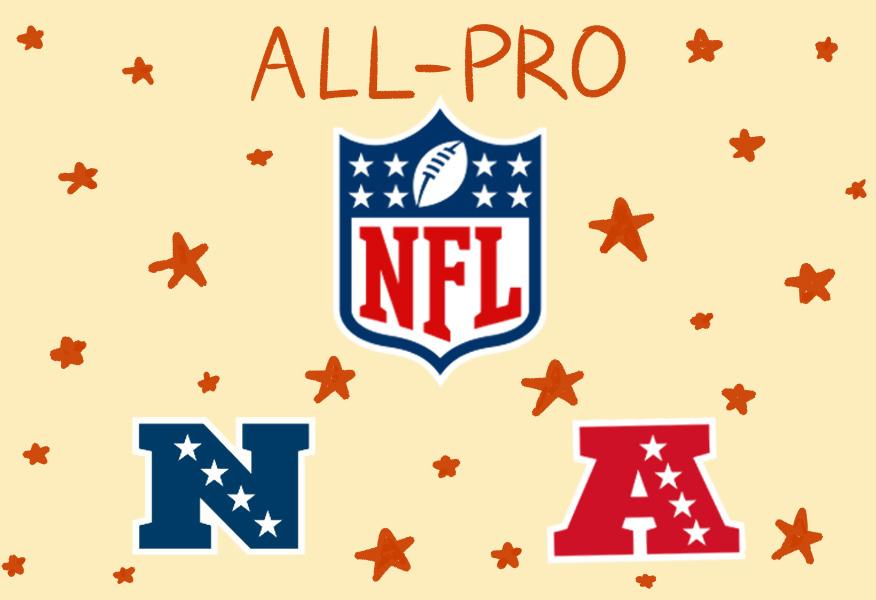
Quarterback: Patrick Mahomes, Kansas City Chiefs Mahomes continues to add to his impressive resumé as he led the NFL in passing yards, passing touchdowns and quarterback (QB) rating. He also helped the Chiefs win 14 games, granting them a first-round bye in the playoffs. This is the third time that Mahomes has made the AP All-Pro team in his career, a notable achievement.
Running Back: Josh Jacobs, Las Vegas Raiders Jacobs earned his first career AP All-
Pro nod after rushing for 1,653 yards and 12 touchdowns. He is slated to be a free agent this offseason after the Raiders declined his fifth-year option prior to the 2022 season. Jacobs will likely be one of the most sought-after running backs during free agency.
Wide Receivers: Justin Jefferson, Minnesota Vikings and Davante Adams, Las Vegas Raiders Jefferson has made the AP All-Pro team every season since he entered the league three years ago. This was his first time making the AP All-Pro first team after leading the NFL in both receptions and receiving yards this season. The Vikings plan to start negotiating a contract extension with the star wide receiver this offseason. Adams continues to be one of the NFL’s best wide receivers, even after being traded by the Green Bay Packers to the Raiders prior to this season. He made his third All-Pro team after he had 1,516 receiving yards and led the NFL in receiving touchdowns with 14. Even with the expected departure of former college teammate and friend,
quarterback Derek Carr from the Raiders, Adams will likely stay in Las Vegas for the upcoming season and beyond.
Tight End: Travis Kelce, Kansas City Chiefs For the seventh consecutive season, Kelce has made the AP All-Pro team. He led all tight ends in receiving yards, receptions and touchdowns. With another impressive season at 33 years old, Kelce continues to add to his Hall of Fame resumé.
Center: Jason Kelce, Philadelphia Eagles Jason Kelce, the brother of Travis Kelce, made his fifth AP All-Pro team in his career this year. Kelce was the second-highest-graded center according to Pro Football Focus. The 35-year-old center has considered retirement in the past, but he continues to play at a high level.
Offensive Guards: Joel Bitonio, Cleveland Browns and Zach Martin, Dallas Cowboys Bitonio has earned his fifth consecutive AP All-Pro team nod. He earned an 89.0 player grade from Pro Football Focus as the Browns had one of the best-rushing offenses in the NFL. Martin has the most AP All-Pro team selections out of anybody that made it this year with eight selections. He was also a member of the 2010s AllDecade Team. With this resumé, Martin is a near lock for the Pro Football Hall of Fame.
Offensive Tackles: Andrew Thomas, New York Giants and Lane Johnson, Philadelphia Eagles Thomas made the AP All-Pro second team this season after posting Pro Football Focus run-blocking and pass-blocking grades above 80 this past season. The fourth overall pick in the
2020 draft class appears to be living up to expectations. Johnson was named to his third All-Pro team. Johnson did not allow a QB hit throughout the entire season according to Pro Football Focus, which helped Eagles’ young QB Jalen Hurts have one of the best seasons in his career.
Edge Rushers: Nick Bosa, San Francisco 49ers and Micah Parsons, Dallas Cowboys Bosa had his first AP All-Pro selection after leading the NFL in sacks. He also tied for first place with 90 quarterback pressures according to Pro Football Focus. Bosa wreaked havoc for the 49ers all season and has a chance to win the NFL Defensive Player of the Year Award. Parsons has played in the NFL for two years and has already made two AP All-Pro first teams. He had 13.5 sacks and tied Bosa for most QB pressures. He will be competing with Bosa to win his first NFL Defensive Player of the Year Award this playoff season.
Interior Defensive Linemen: Chris Jones, Kansas City Chiefs and Dexter Lawrence, New York Giants Jones had 15.5 sacks this season, earning a spot on the AP All-Pro team for the fourth time in his career. He also contributed to the Chiefs’ defense in other ways, including getting 17 tackles for loss and 29 quarterback hits. One of the premier nose tackles in the NFL, Lawrence earned his first AP All-Pro nod. He led all defensive players in QB pressures when lined up as a nose tackle with 29. The secondclosest player, Miami Dolphins’ nose tackle Raekwon Davis, only had eight.
Linebackers: Fred Warner, San Francisco 49ers and Roquan Smith, Baltimore Ravens Warner continues to be one of the best linebackers in the NFL after
racking up 130 combined tackles, an interception and a forced fumble. He is a force in both pass coverage and run defense with the ability to cover the whole field. It explains why he is a twotime AP first-team All-Pro. Smith made his third straight AP All-Pro team during a season in which he was traded from the Chicago Bears to the Baltimore Ravens. In nine games as a Raven, Smith had 86 combined tackles, seven tackles for loss and an interception. As a result, he earned a five-year contract extension worth $100 million for his performance.
Cornerbacks: Sauce Gardner, New York Jets and Patrick Surtain, Denver Broncos
The only rookie to be selected to the AP All-Pro team, rookie Gardner had a historic season. He was a lockdown corner, giving up just 452 yards and 46 completions. He also led the NFL in passes broken up with 20.
Second-year corner Surtain made his first AP All-Pro team after a season where he only gave up 468 yards and 45 completions. He also intercepted two passes to help the Broncos have one of the best passing defenses in the NFL.
Safeties: Derwin James, Los Angeles Chargers and Minkah Fitzpatrick, Pittsburgh Steelers
The leader of the Chargers’ defense, James made the AP All-Pro team for the first time since he was a rookie. He made plays everywhere on the field this past season with 64 solo tackles, four sacks, two forced fumbles and two interceptions.
After receiving a contract extension prior to the season, Fitzpatrick made his third AP All-Pro team. He tied with three other defensive players for most interceptions this season, and he also improved his tackling with 17 defensive stops, according to Pro Football Focus.
SPORTS 12 | THURSDAY, JANUARY 26, 2023 THE CALIFORNIA AGGIE
Guard, Ty Johnson plays an aggressive defense against the UC Riverside Highlanders. (Maia Zhu / Aggie)
NATALIE CHENG / AGGIE
Ty Johnson and the Aggies play a tight game against the Highlanders, with a final score of 72-74. (Maia Zhu / Aggie)















 MAYA KORNYEYEVA / AGGIE
MAYA KORNYEYEVA / AGGIE
 BY CLAIRE SCHAD cfschad@ucdavis.edu
BY CLAIRE SCHAD cfschad@ucdavis.edu




 BY LIDYA SHCHERBAKOVA lvshcherbakova@ucdavis.edu
BY LIDYA SHCHERBAKOVA lvshcherbakova@ucdavis.edu
 BY ANA BACH
BY ANA BACH




 BY SARAH HAN arts@theaggie.org
BY SARAH HAN arts@theaggie.org


 BY ADHITHI ANJALI arts@theaggie.org
BY ADHITHI ANJALI arts@theaggie.org












